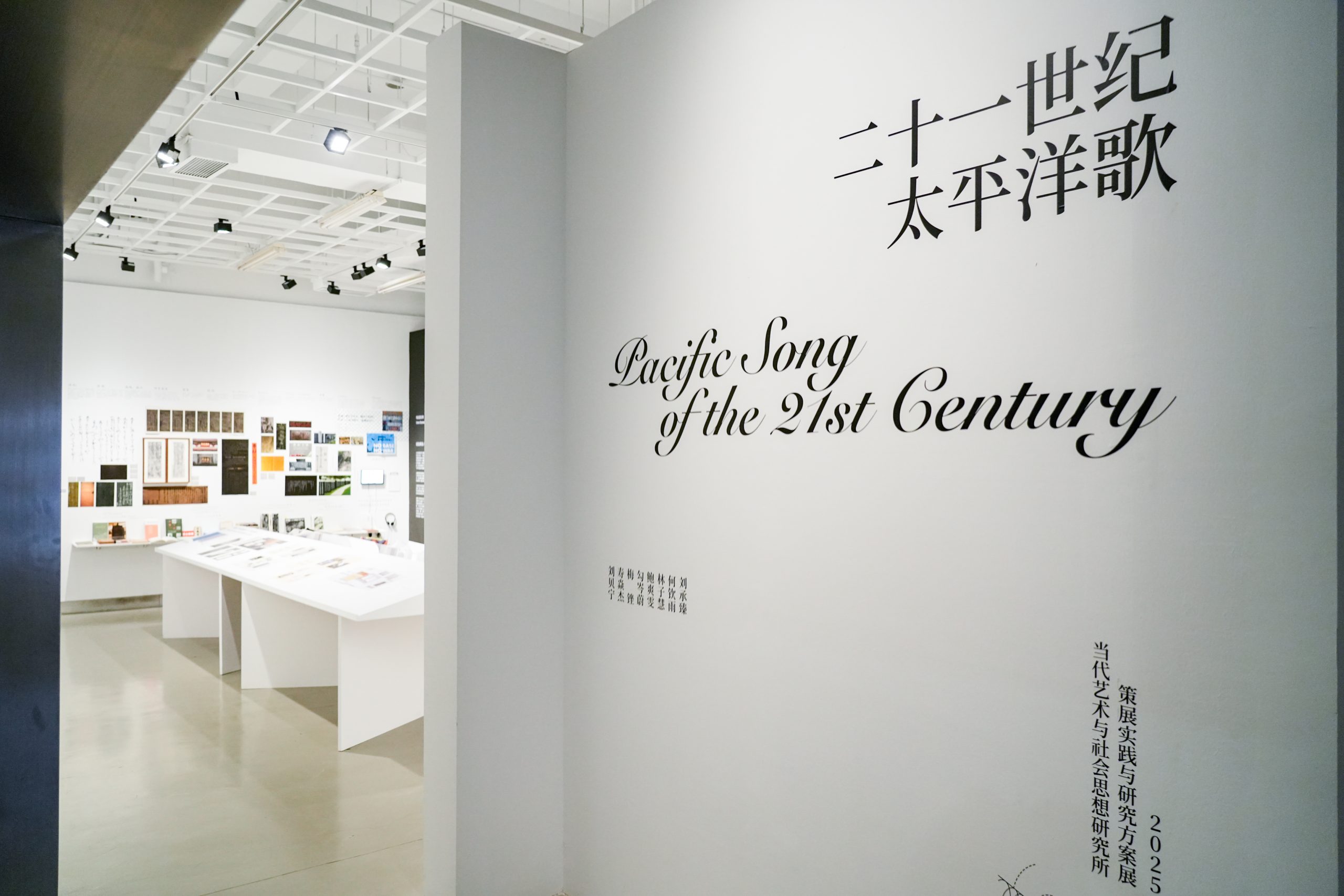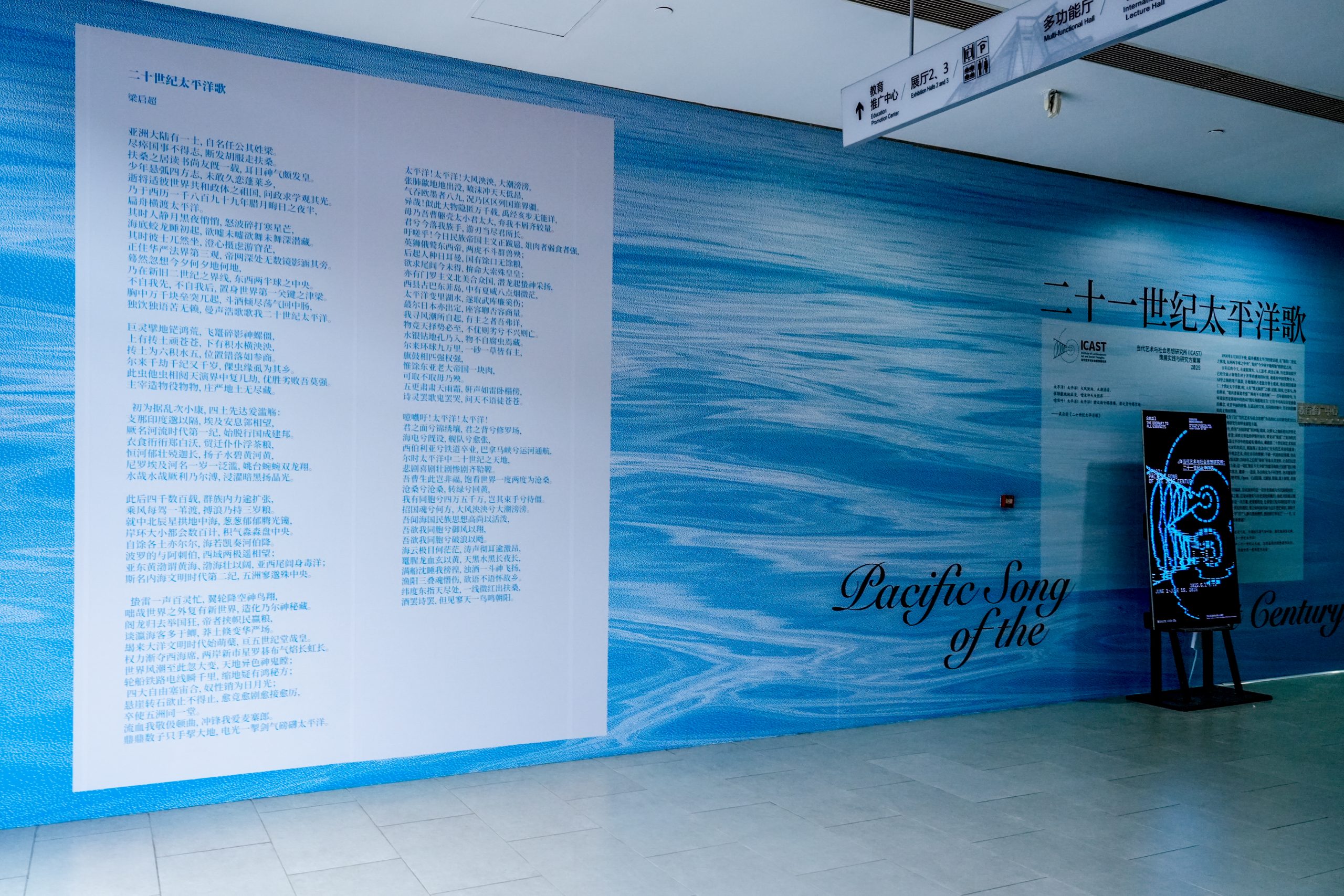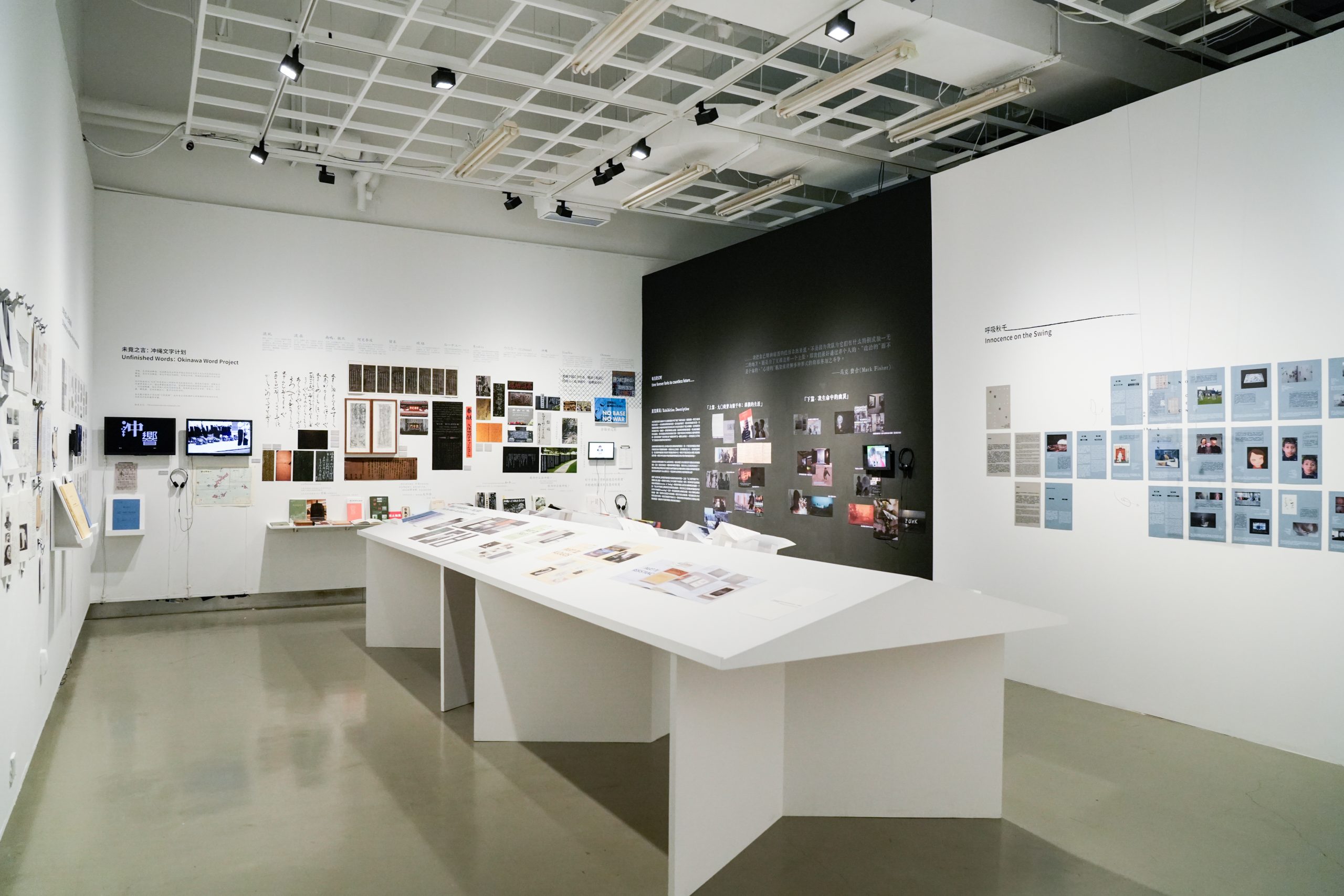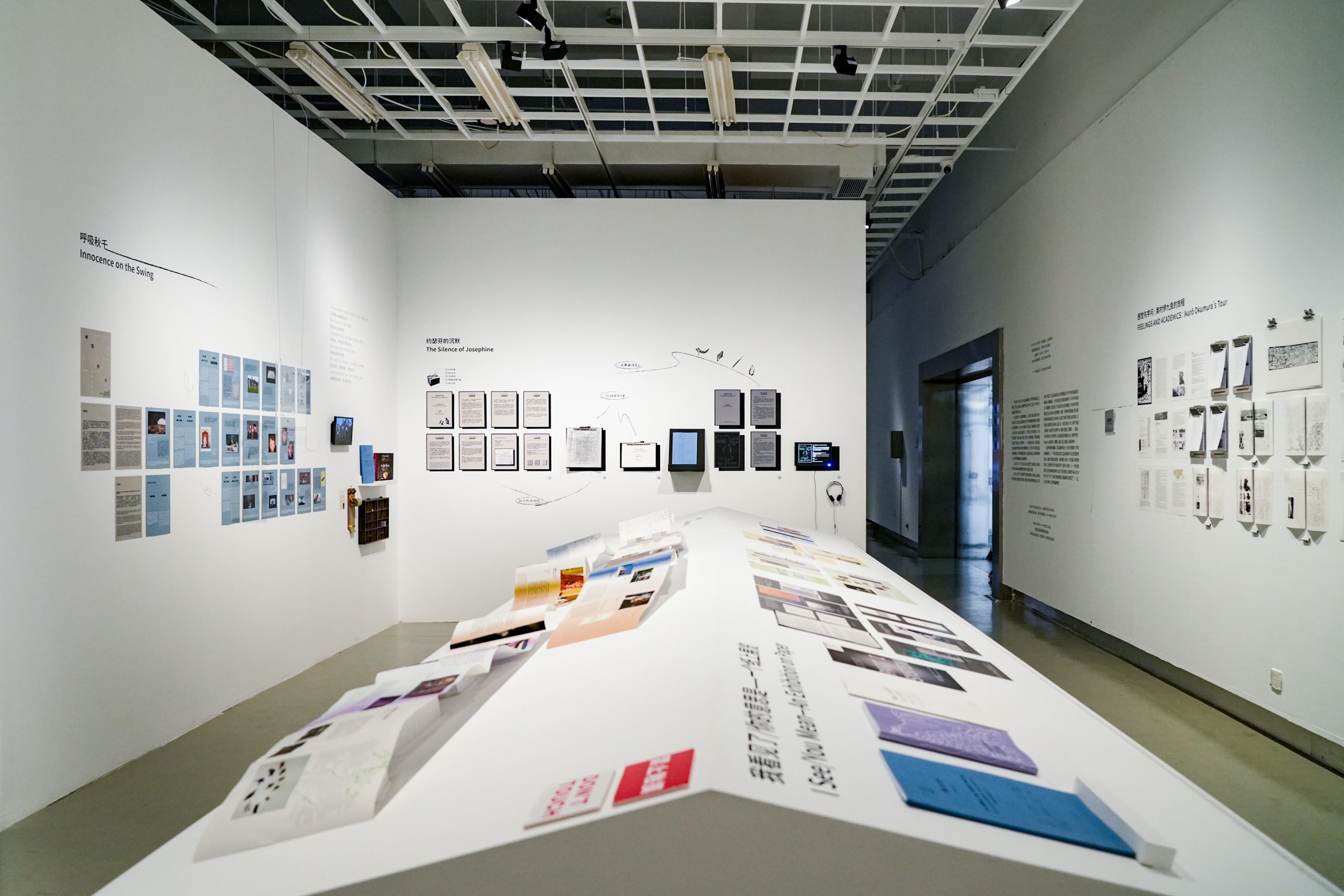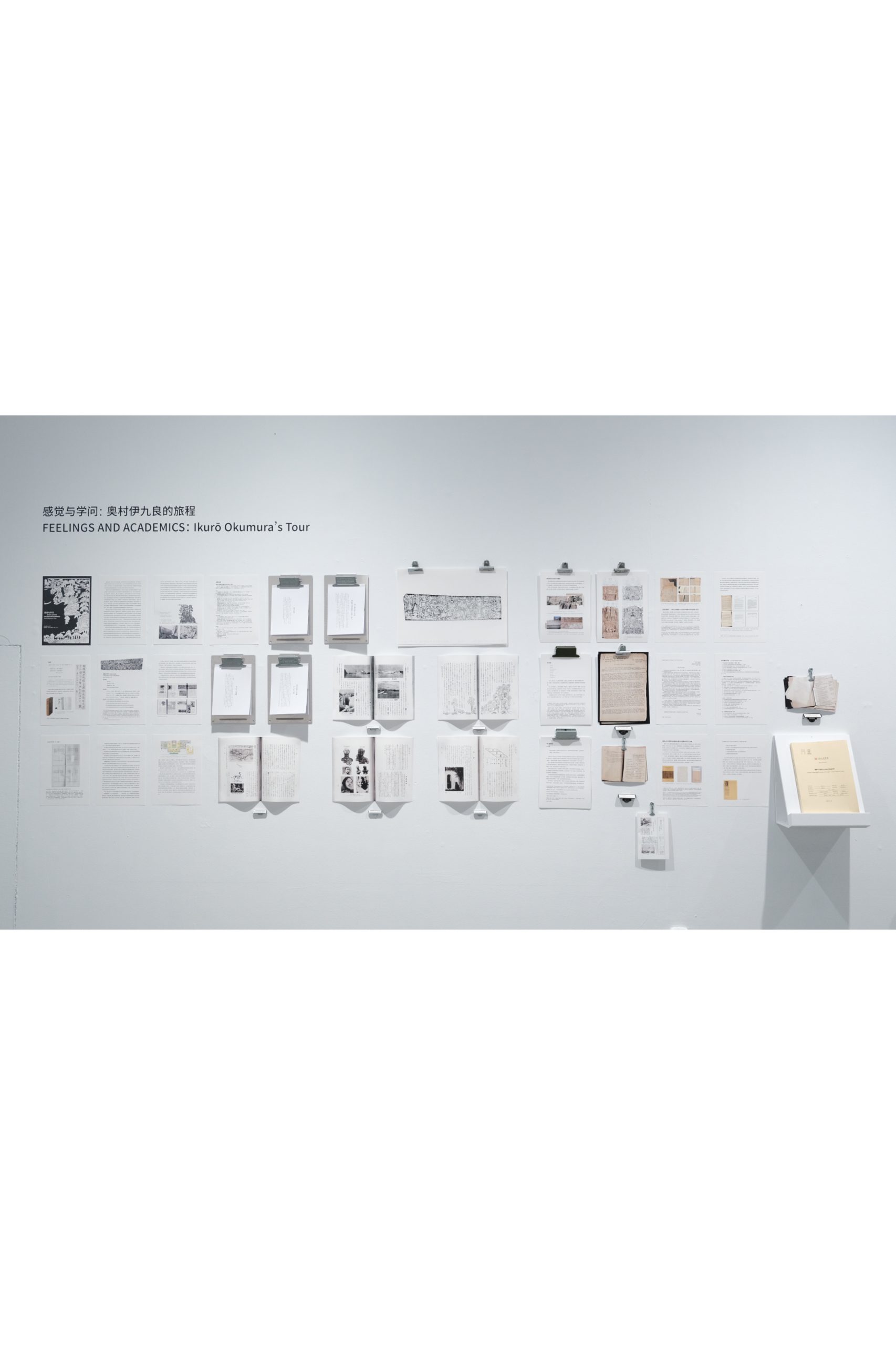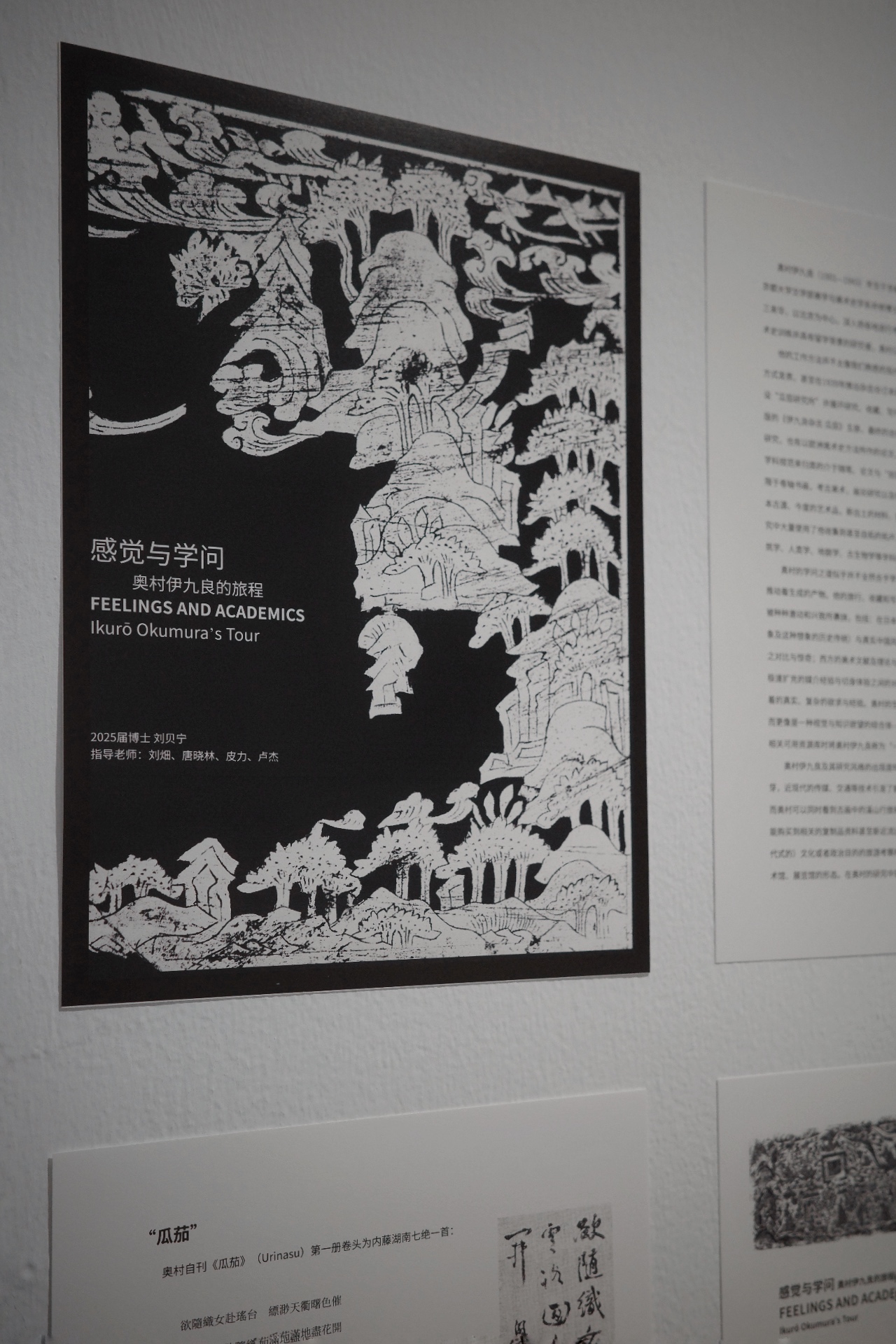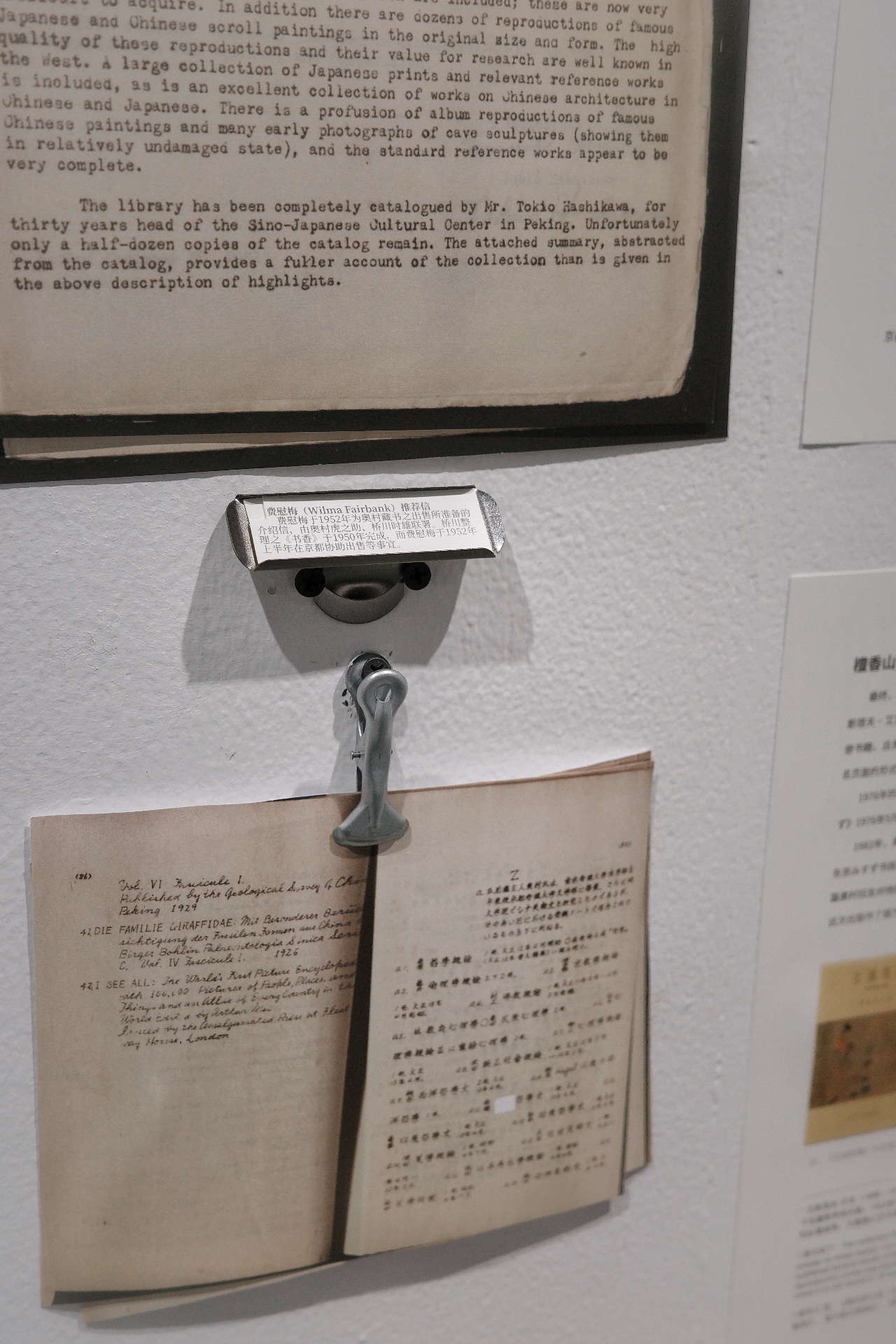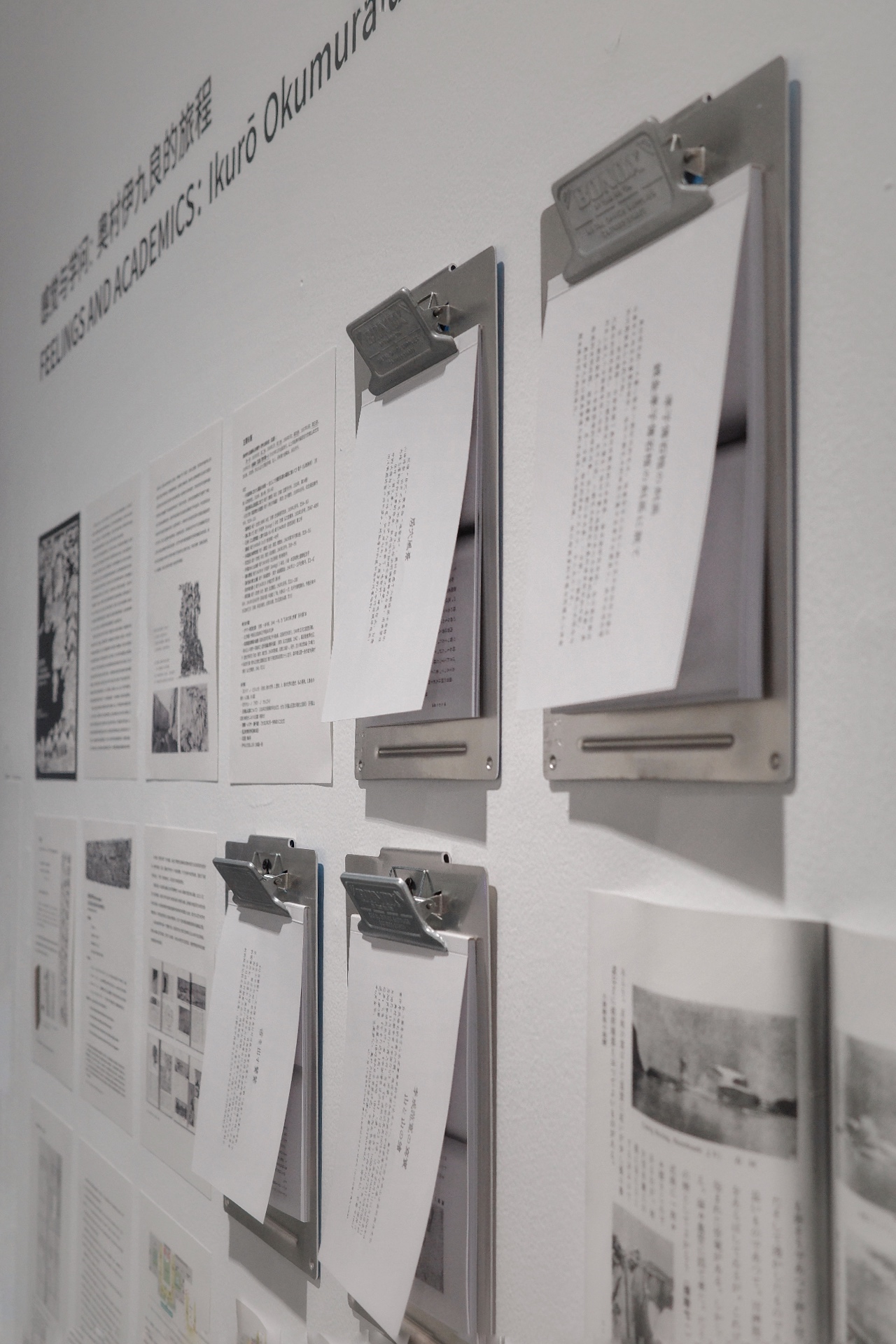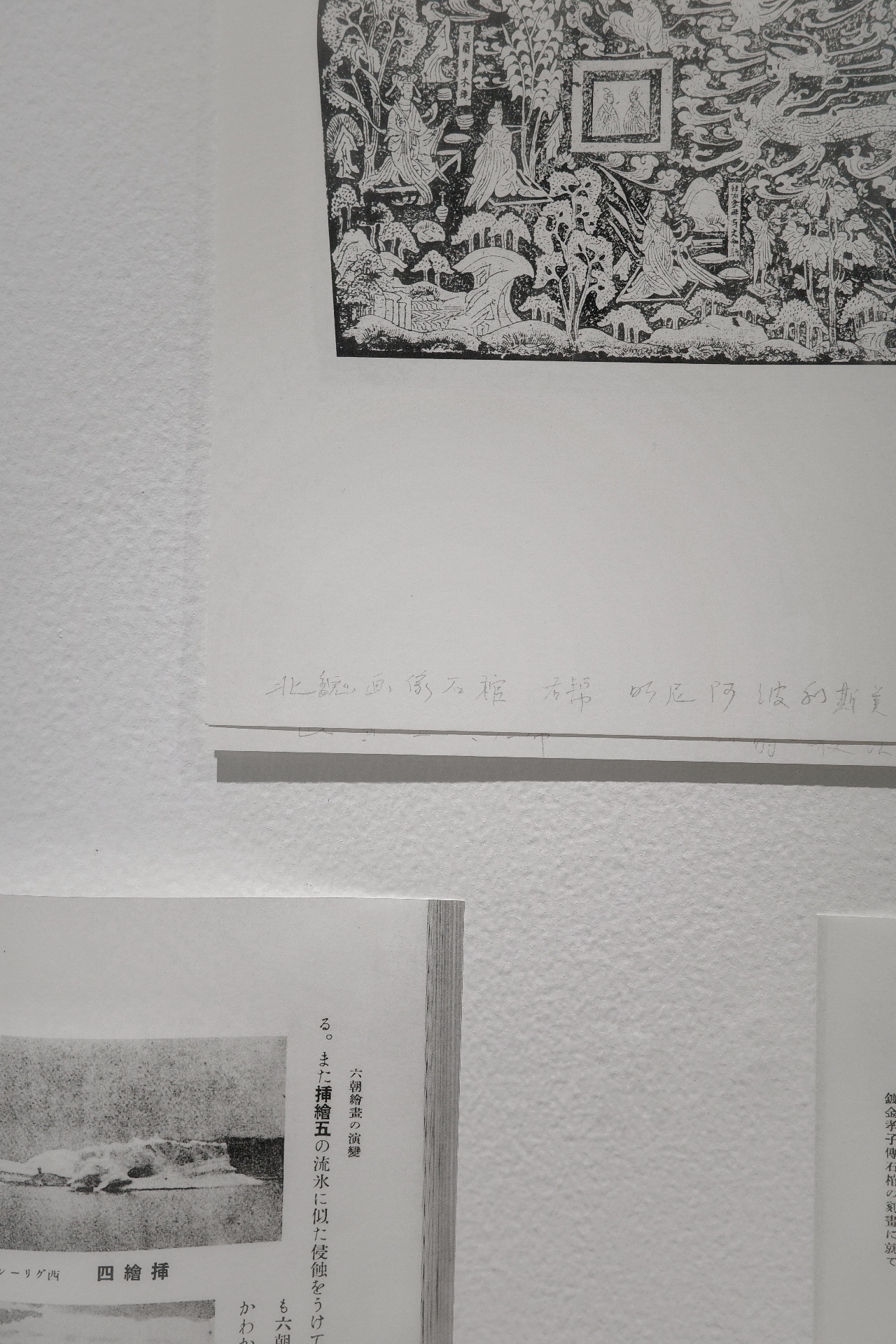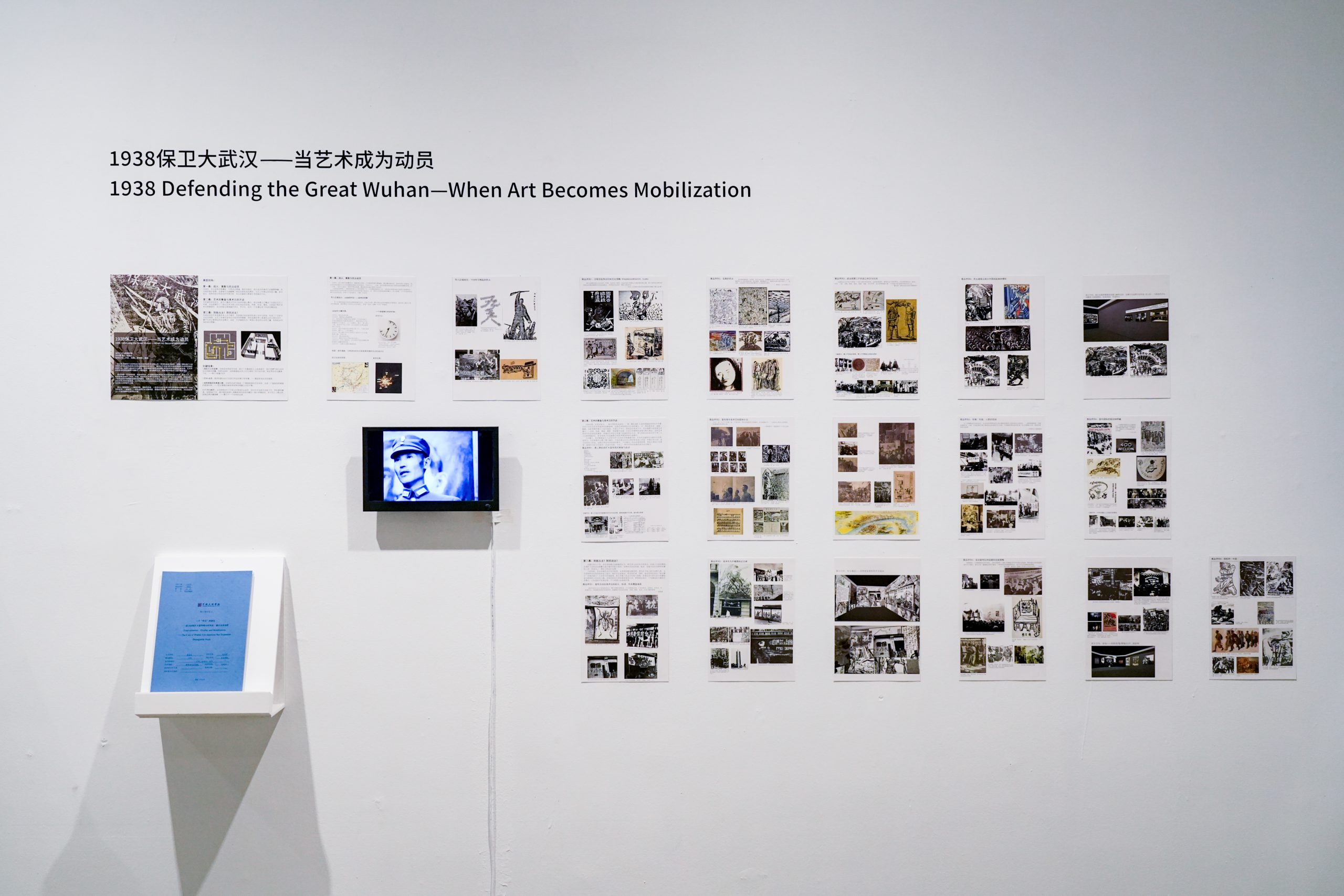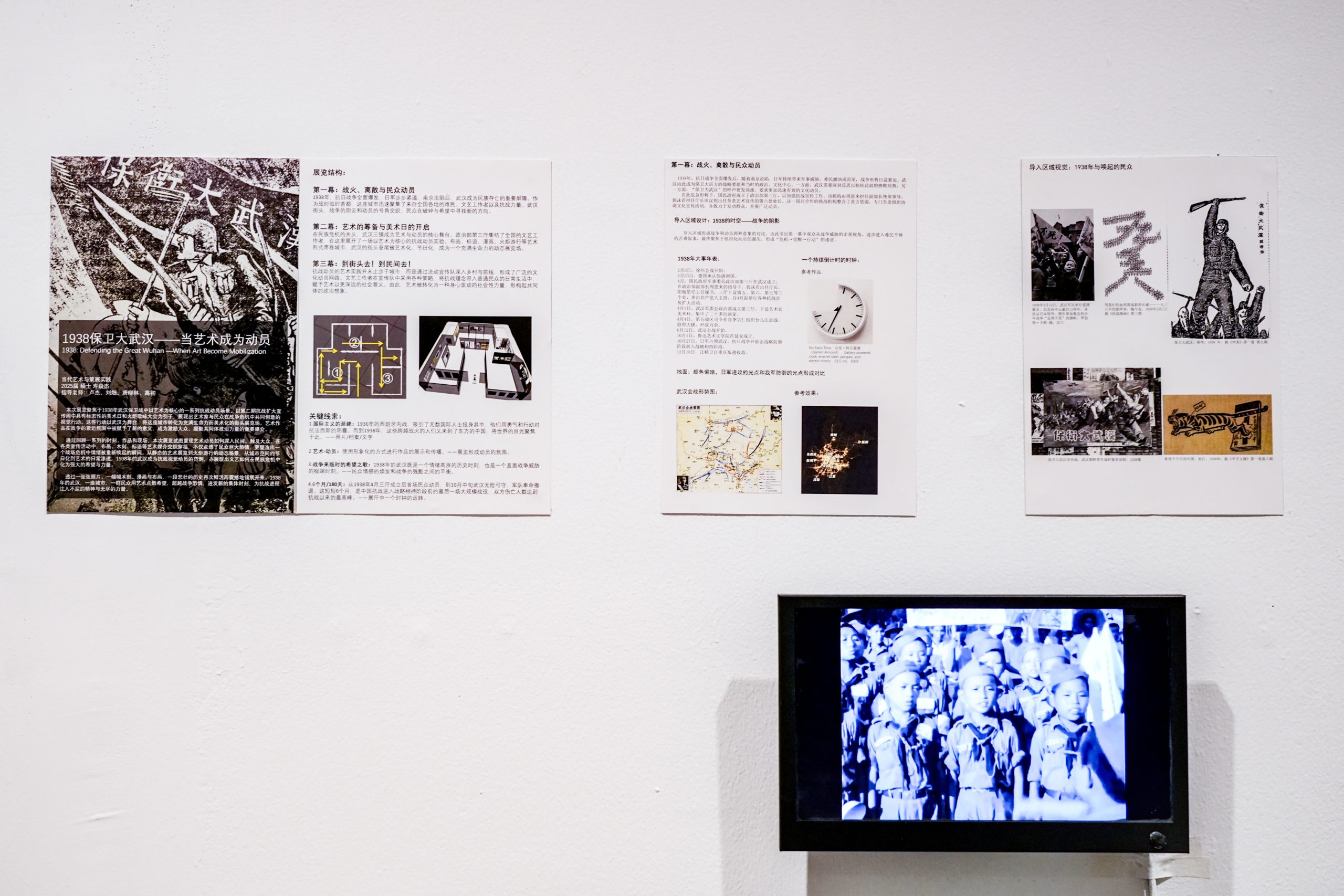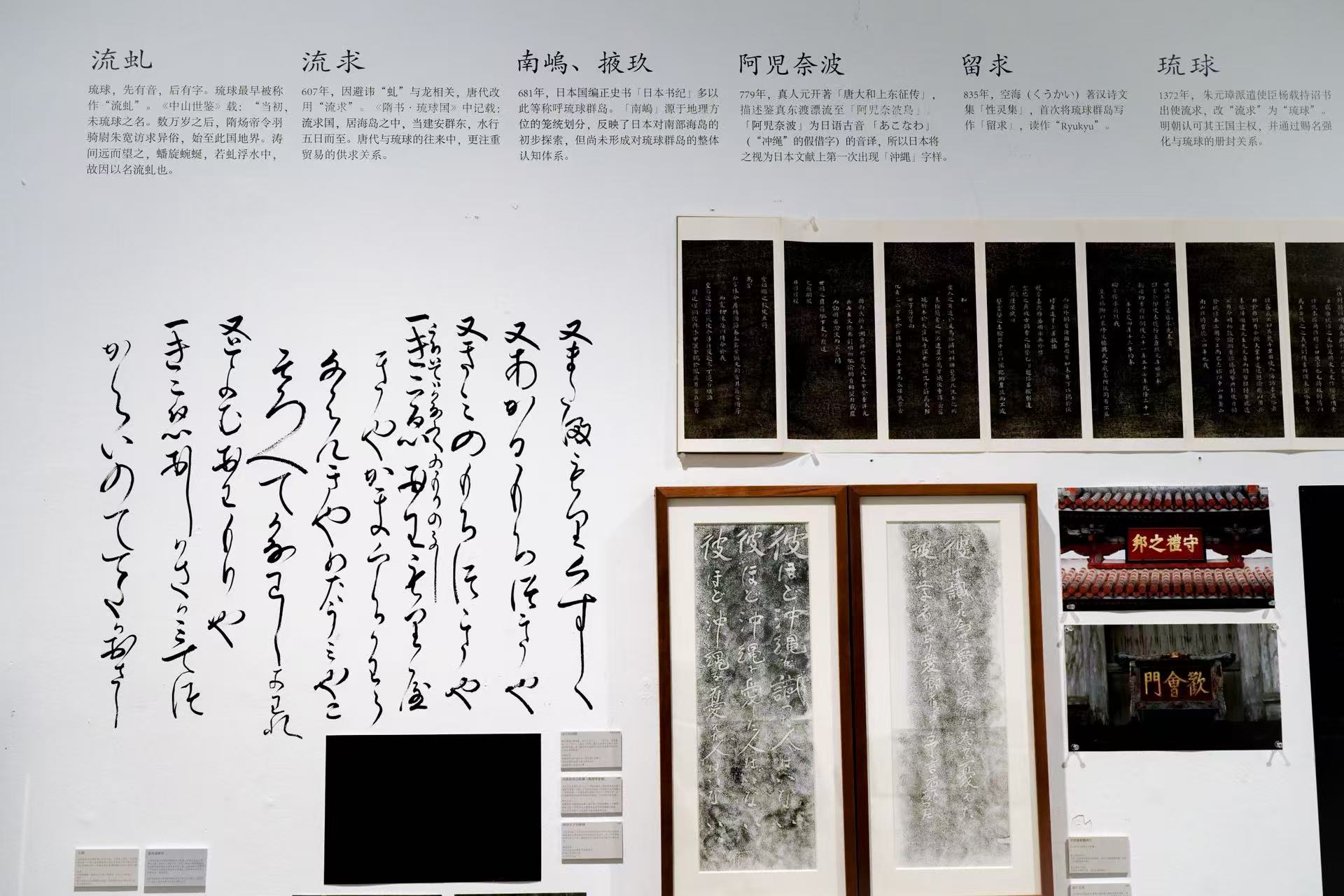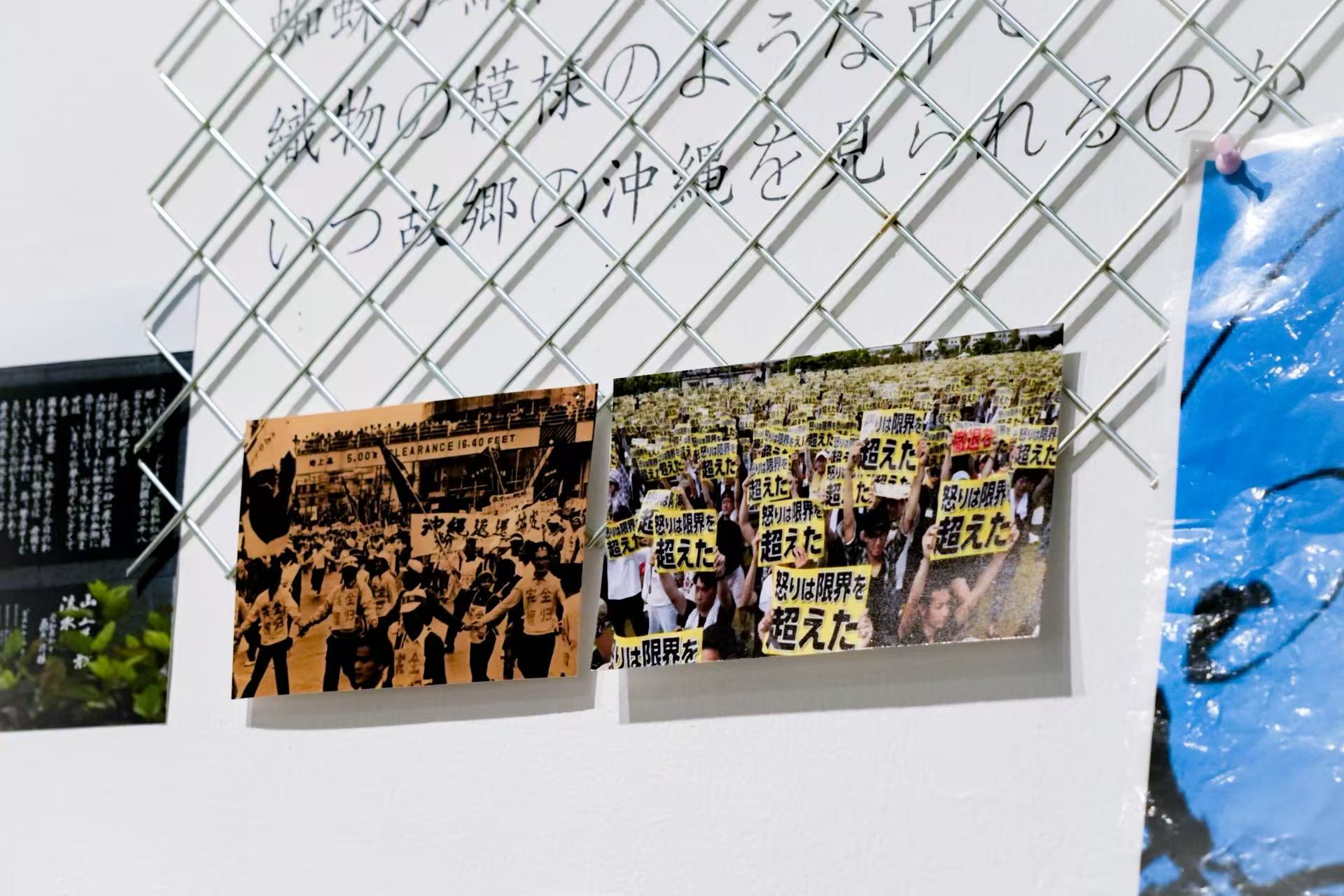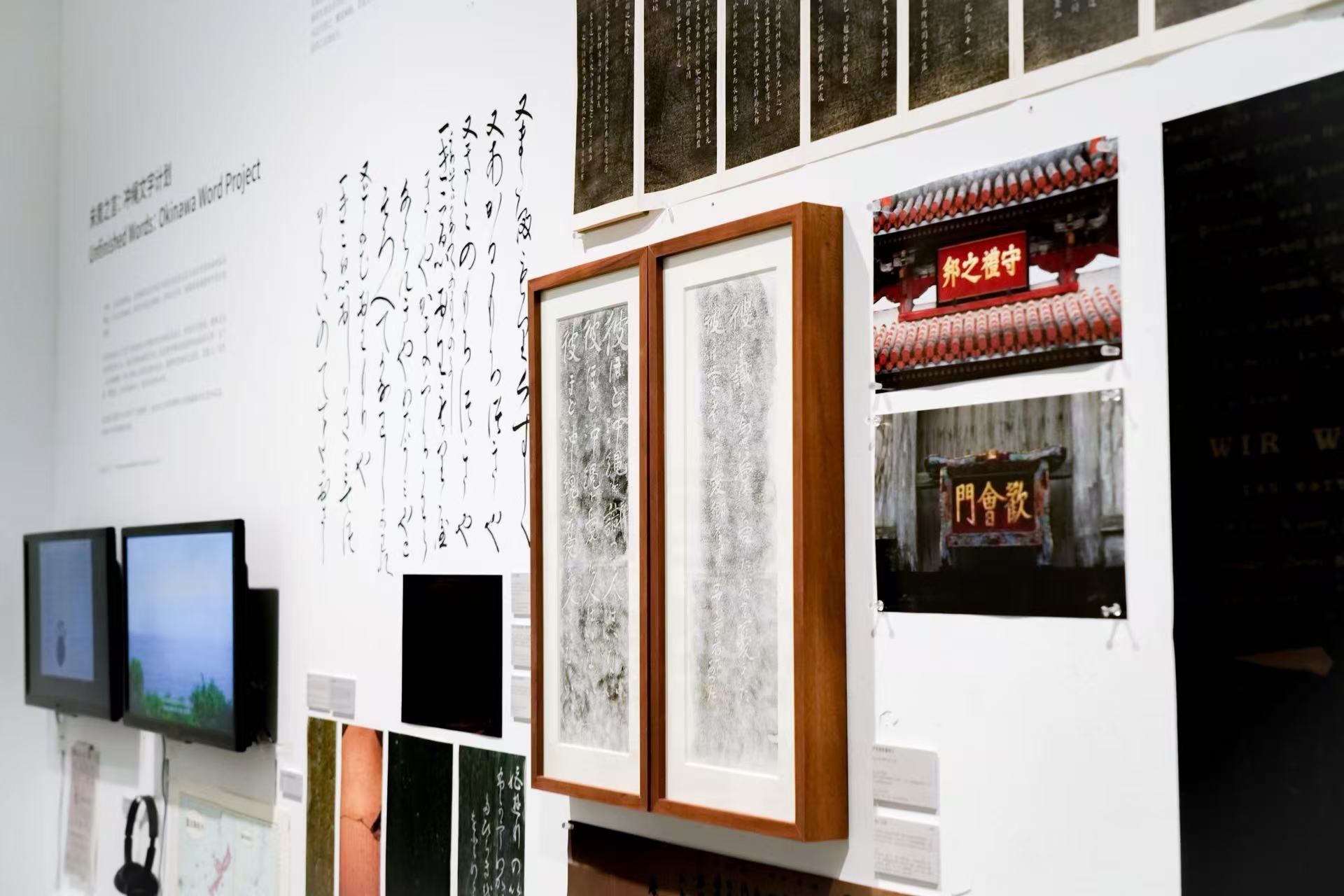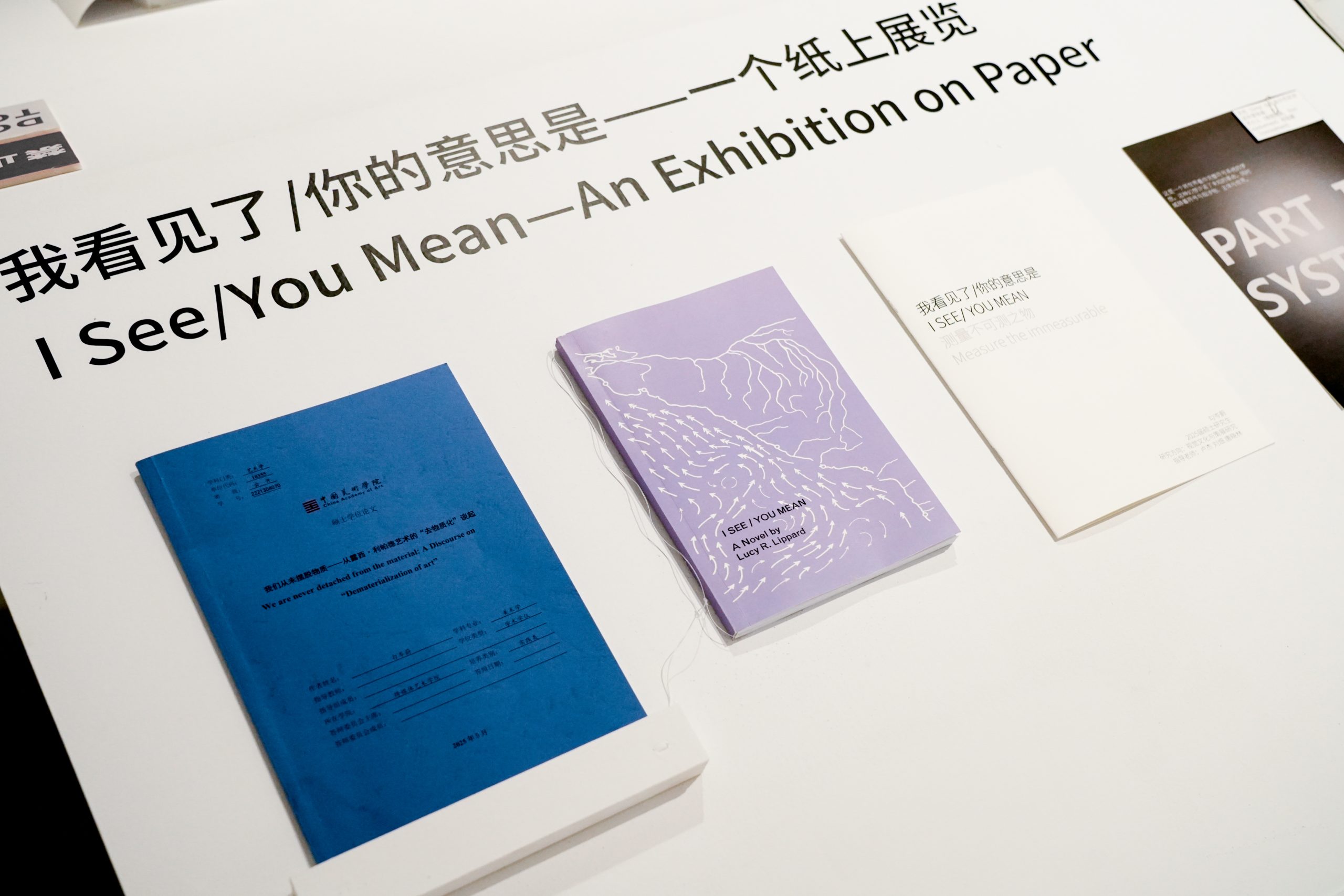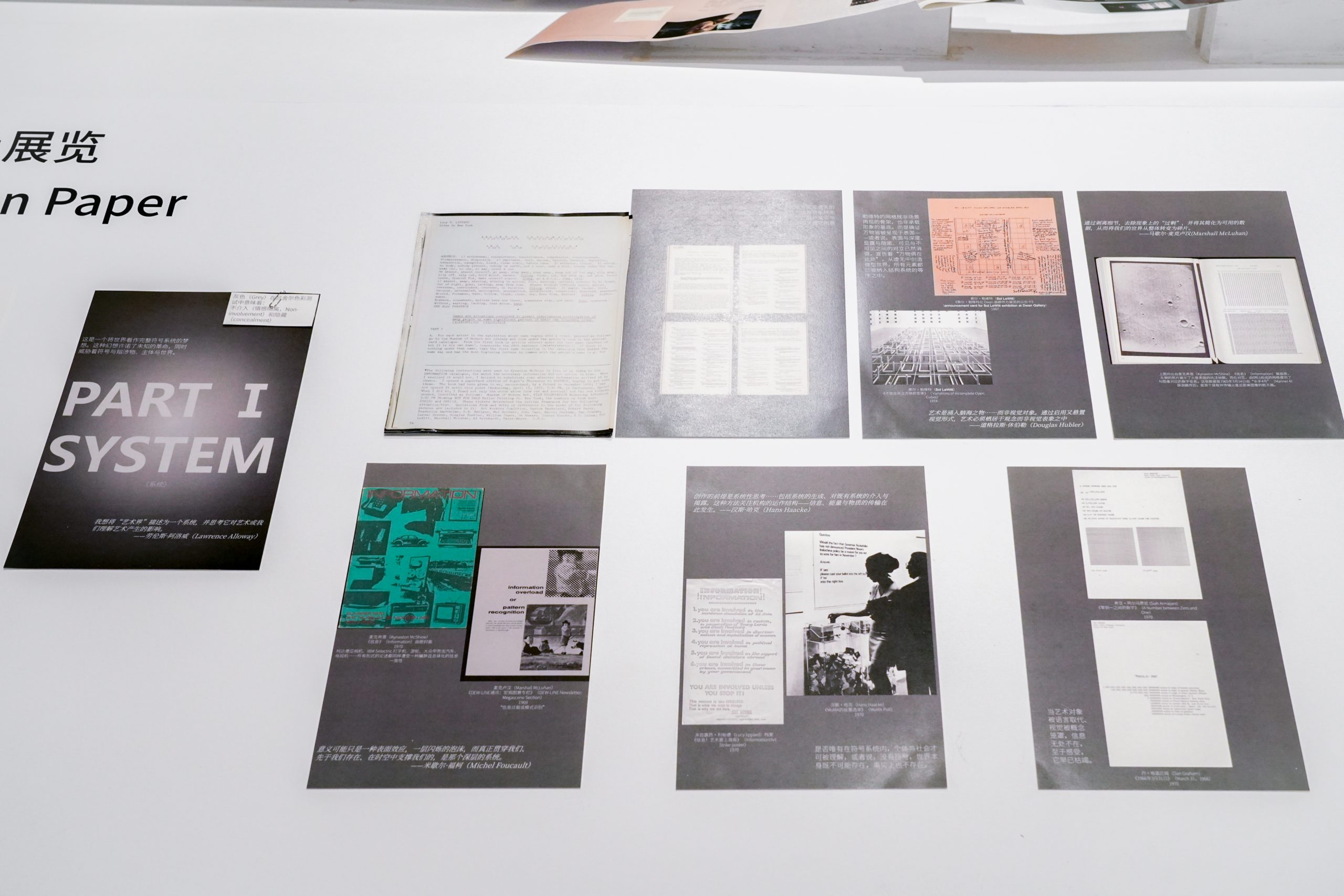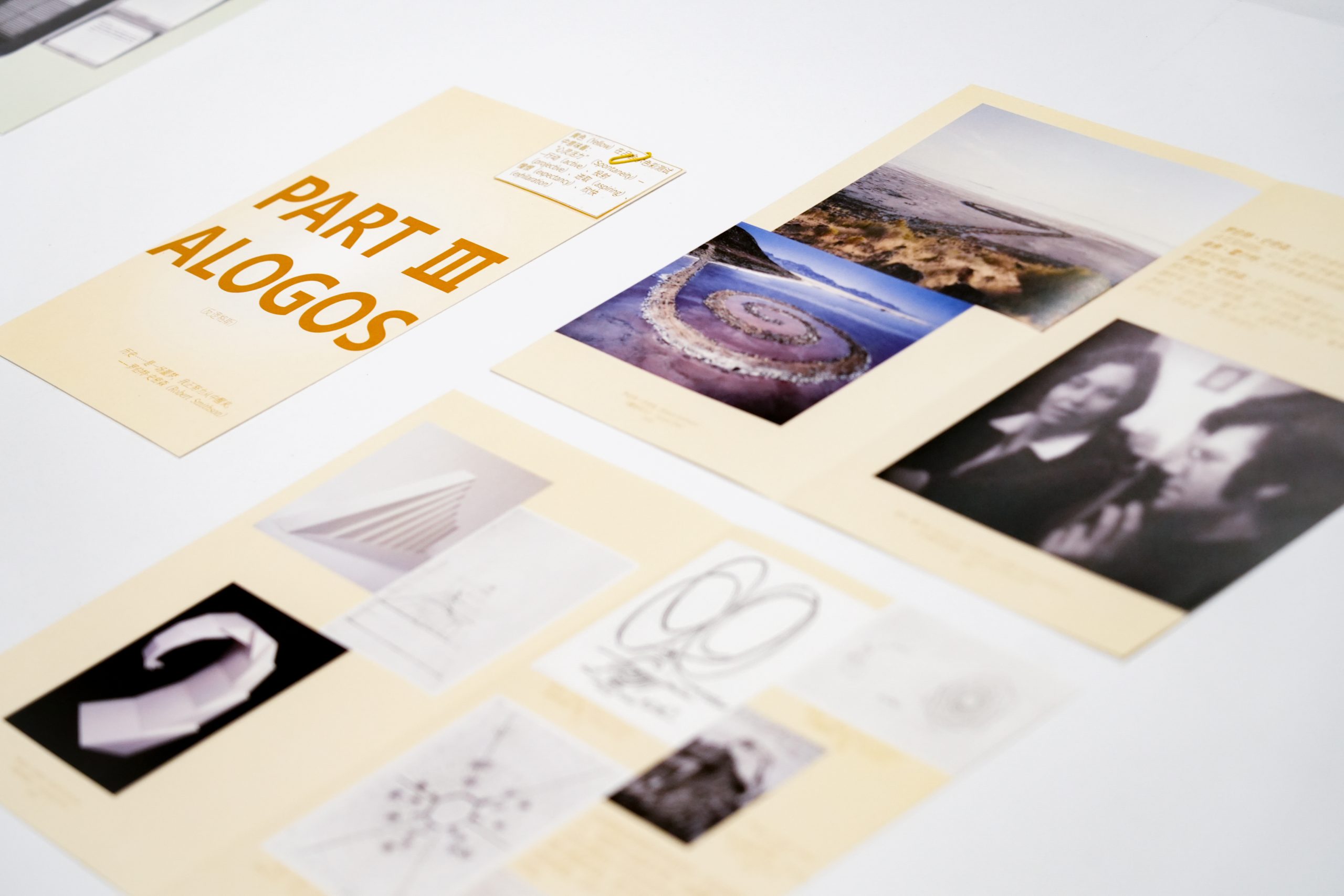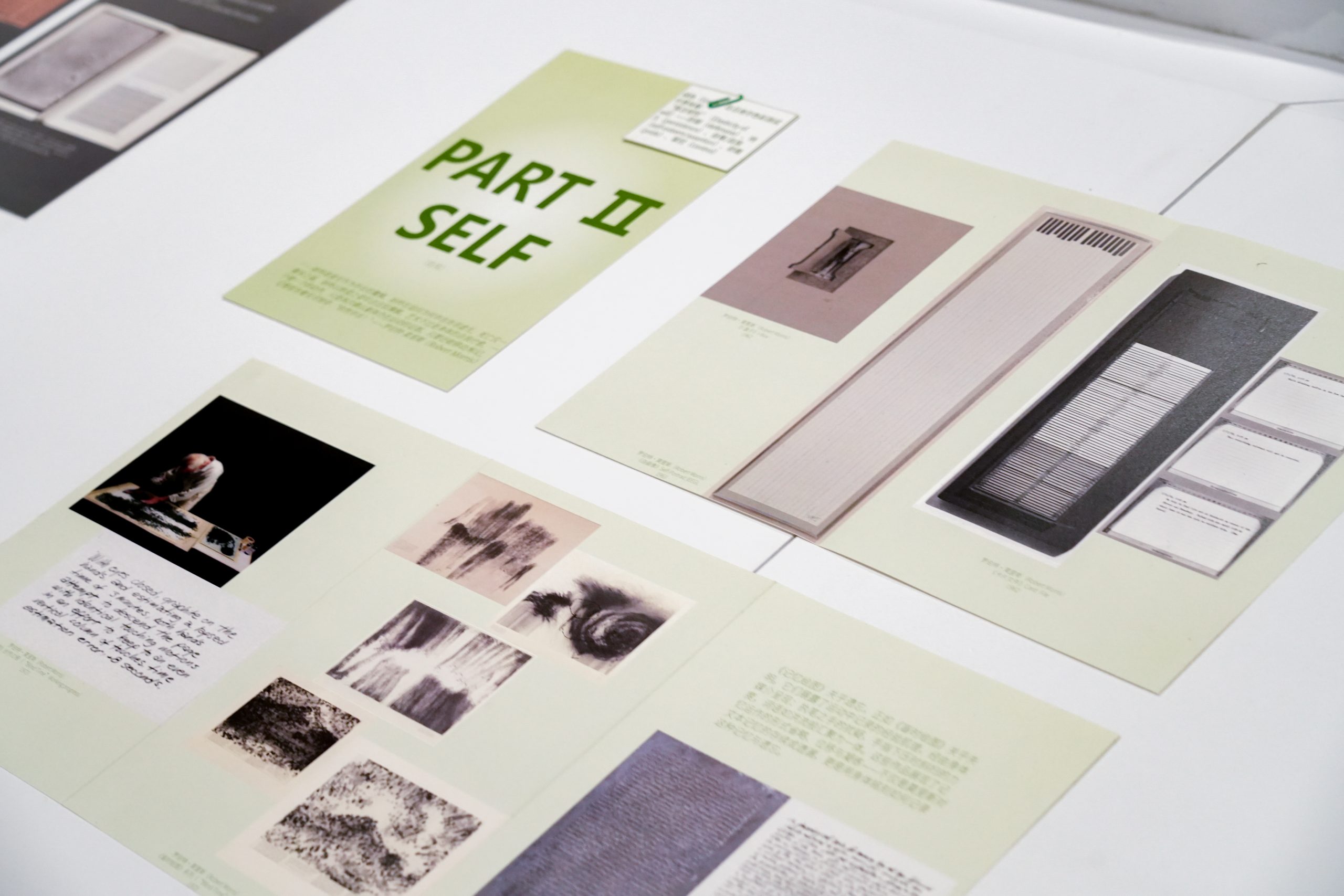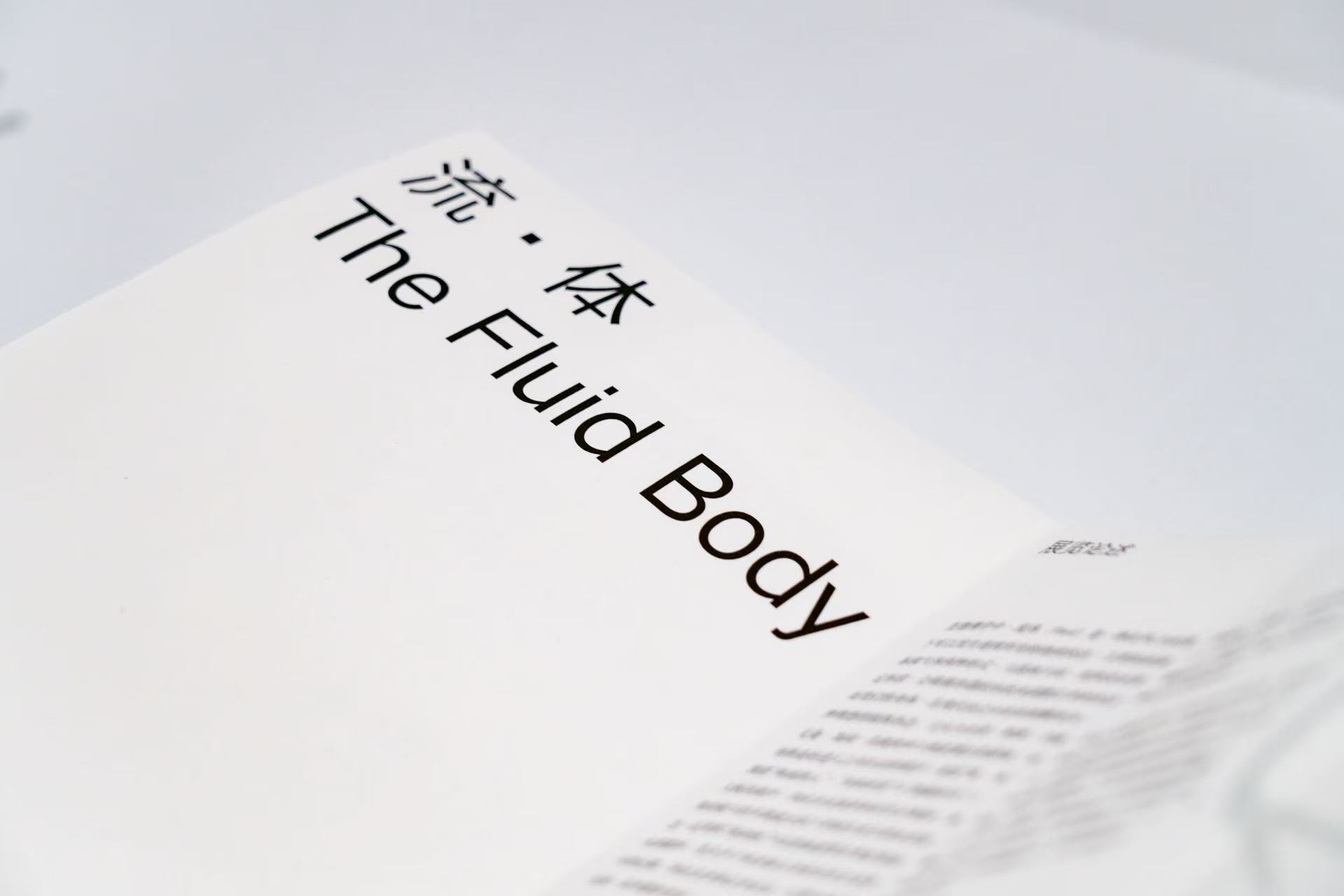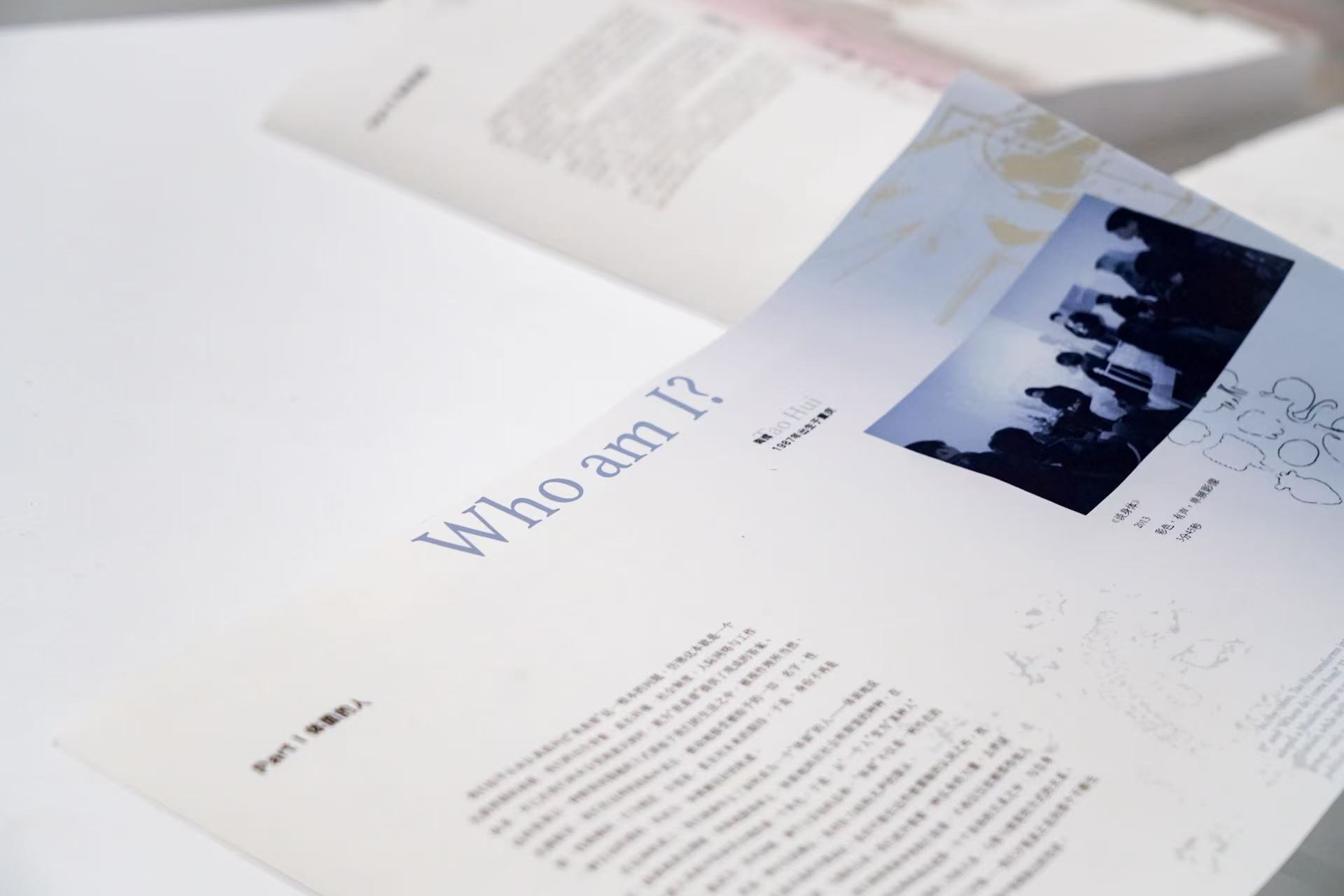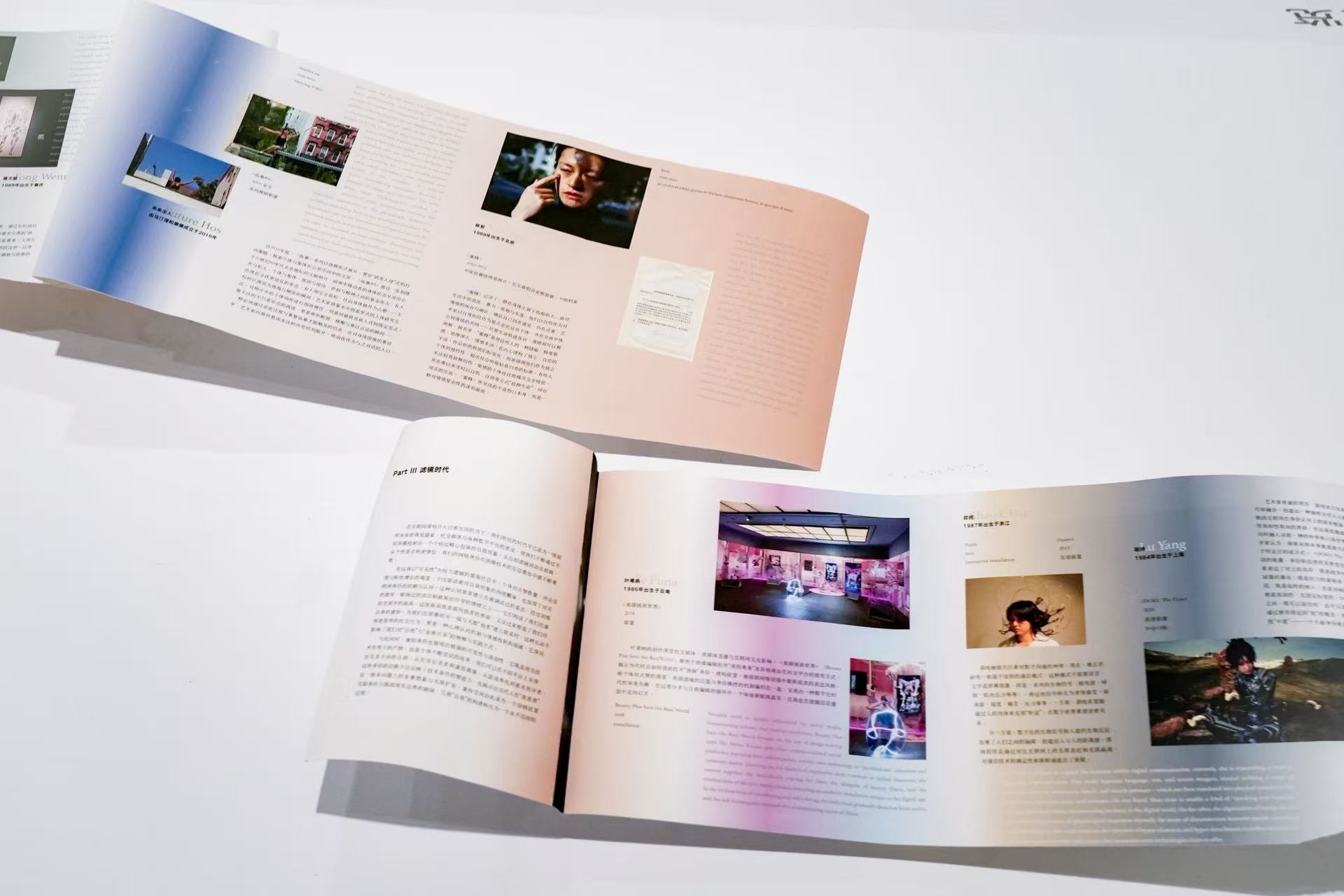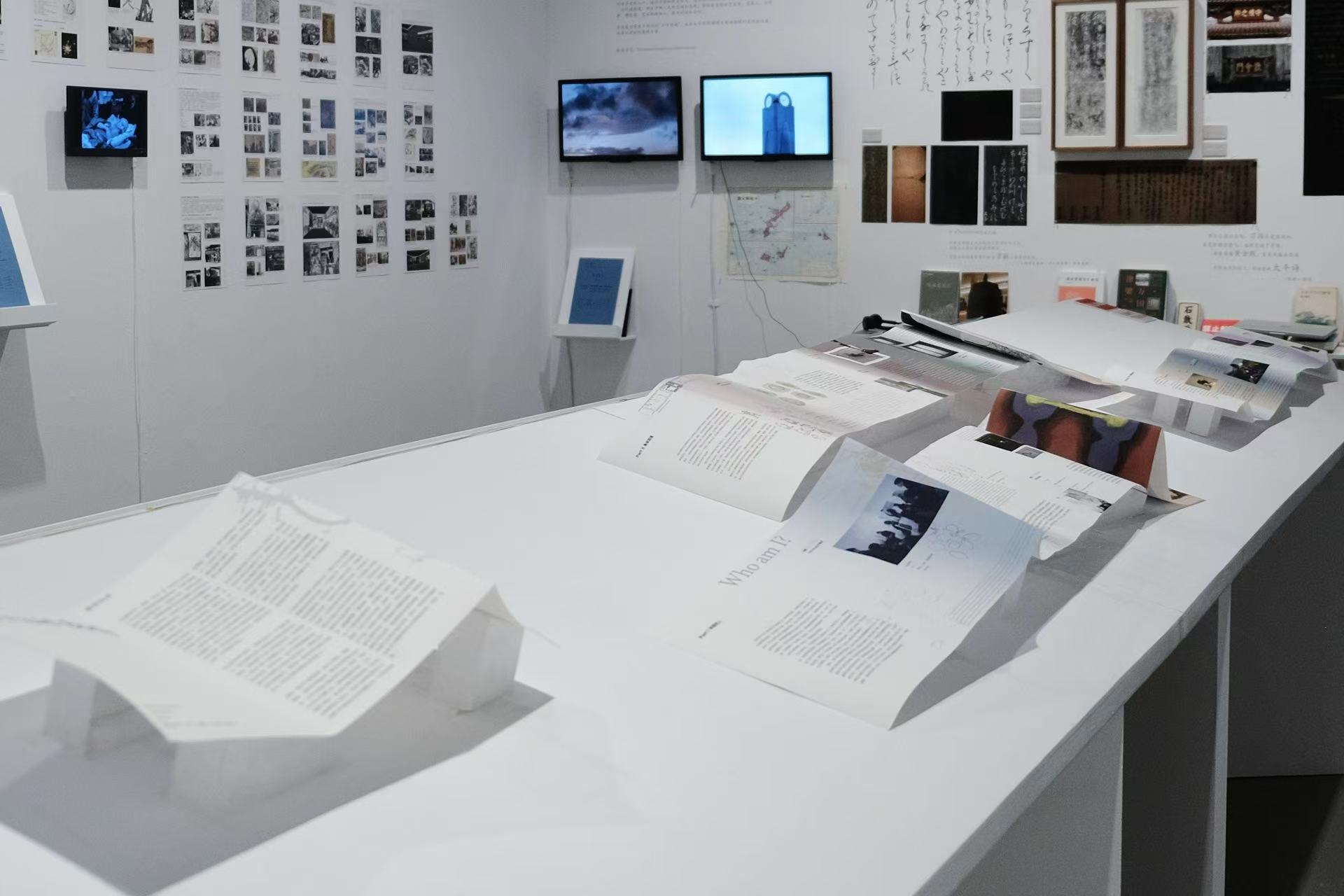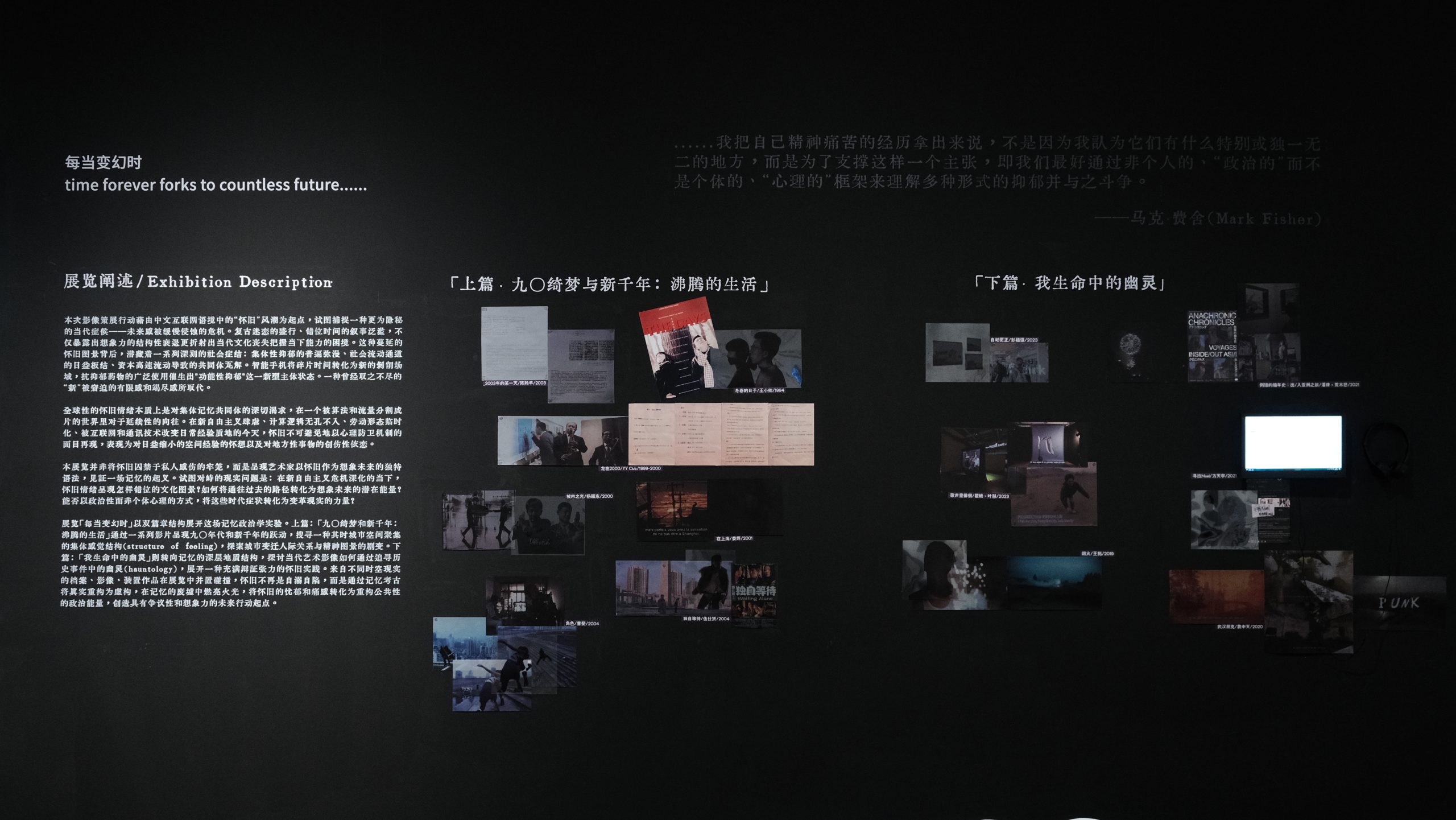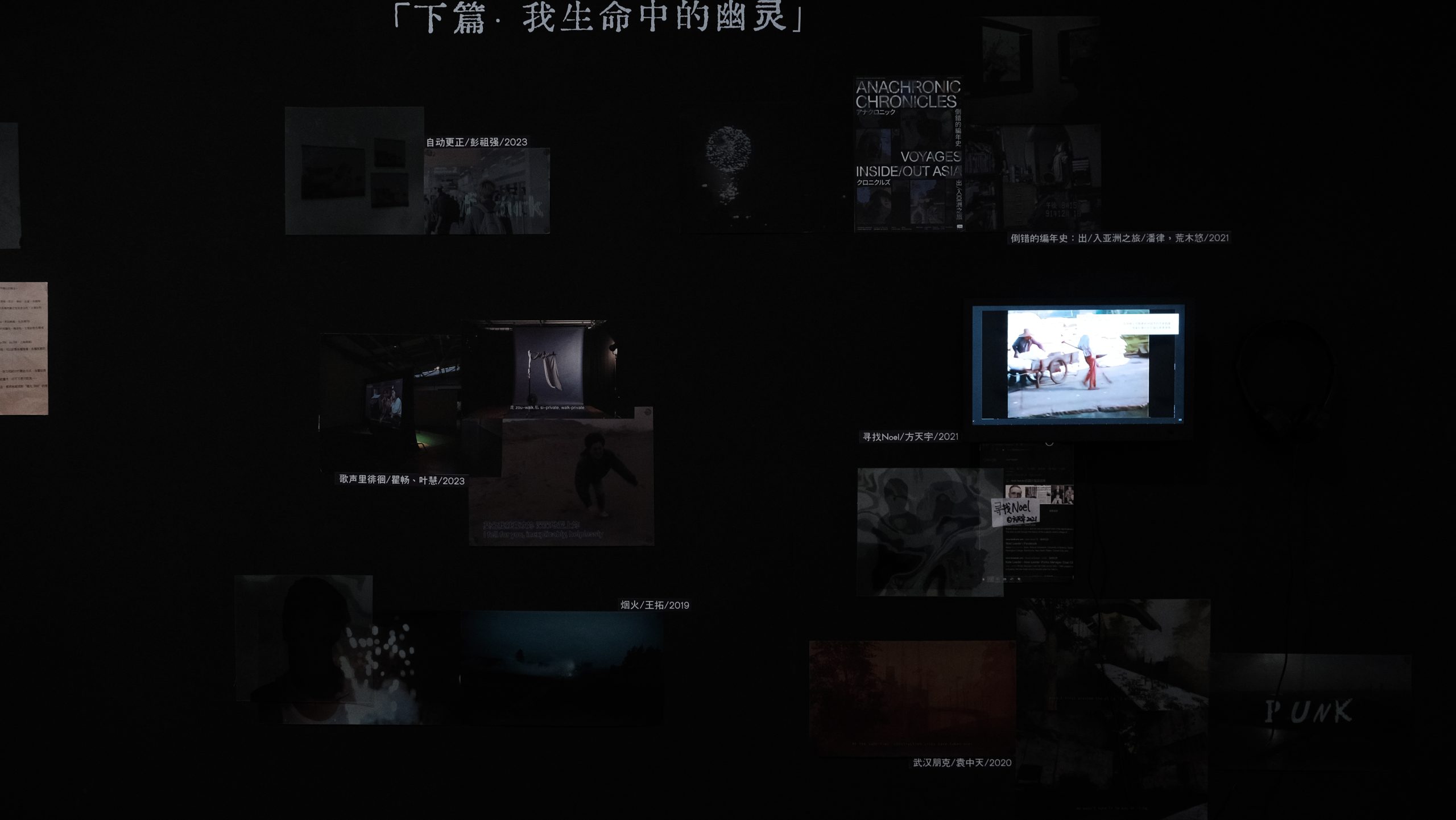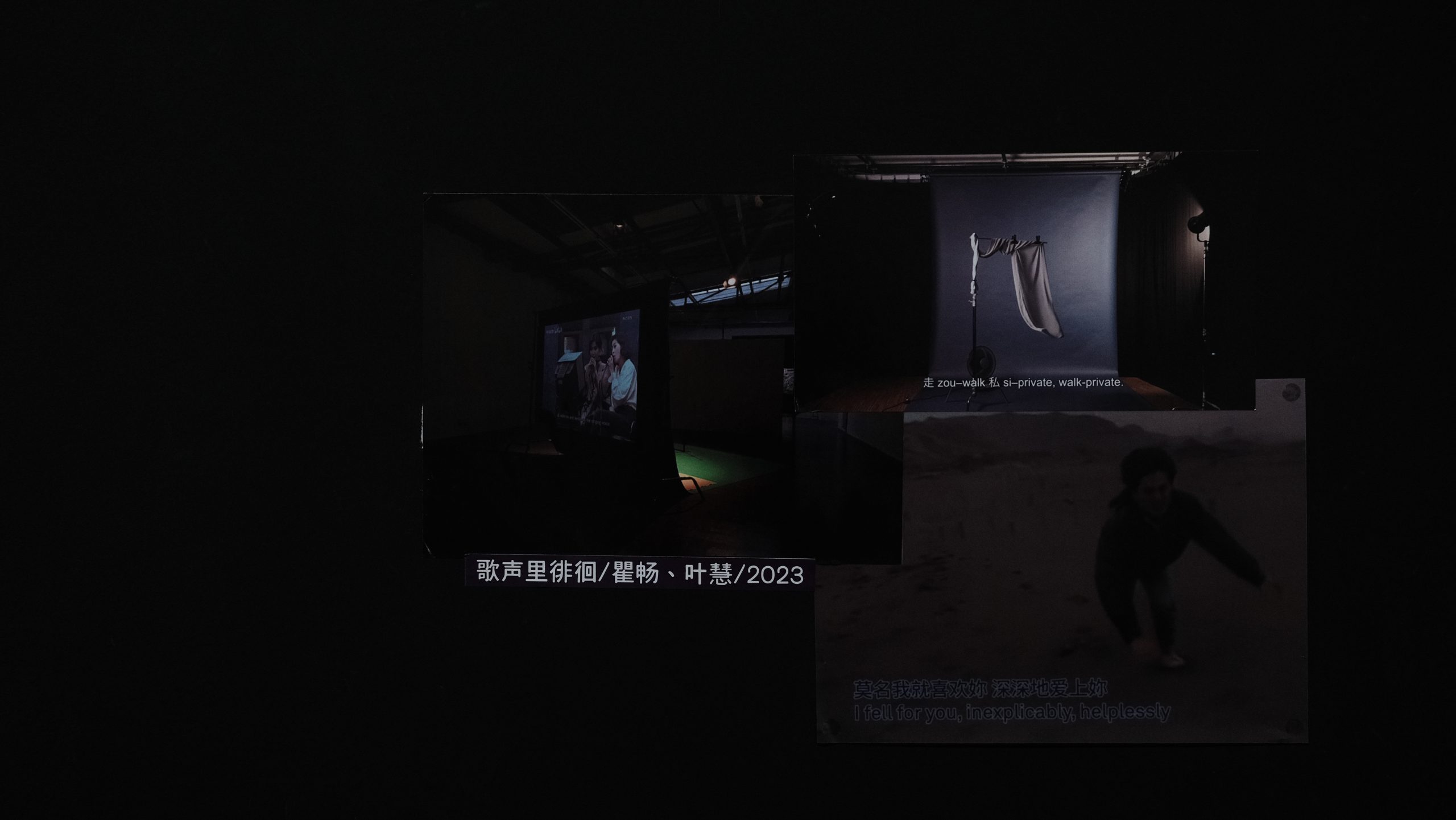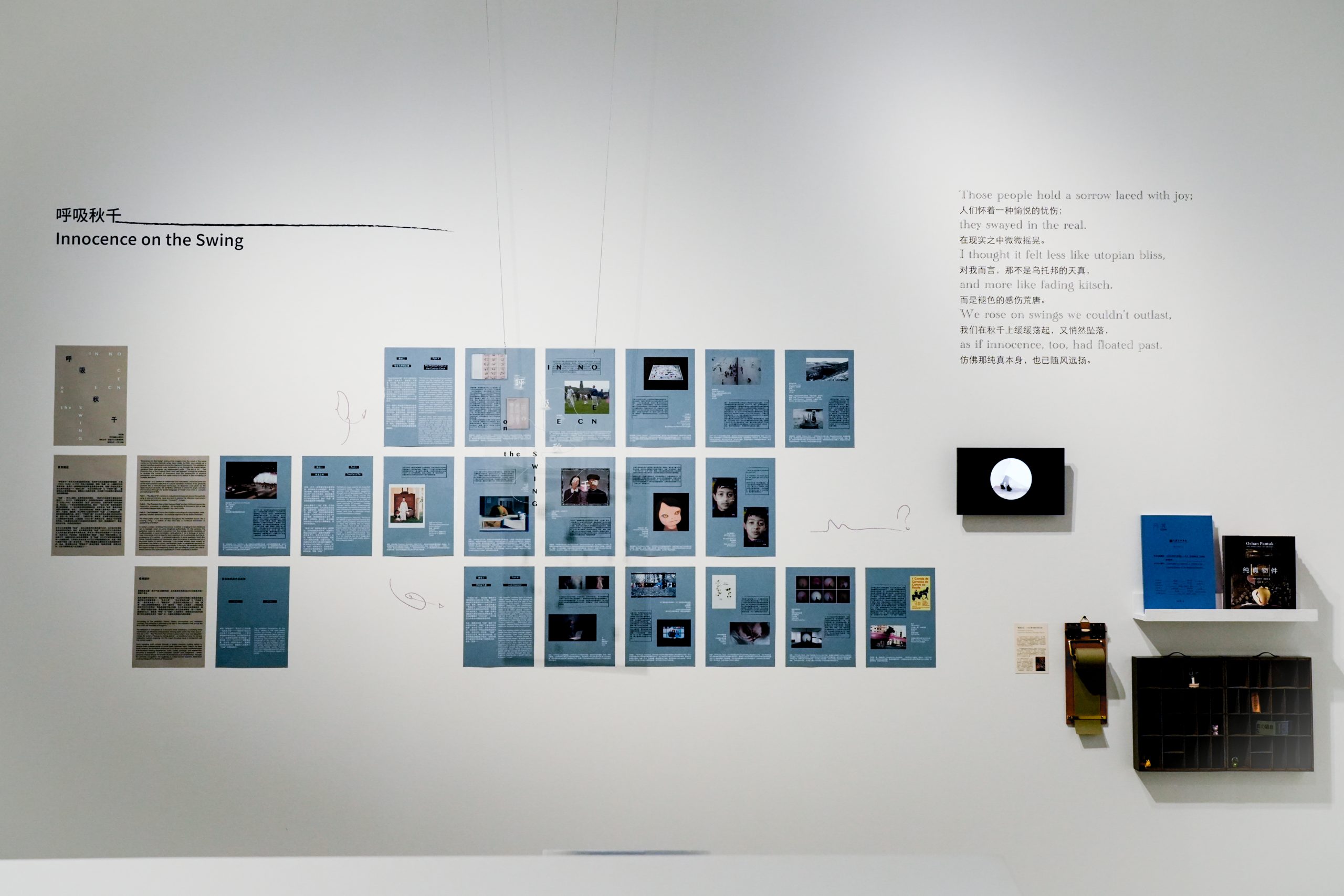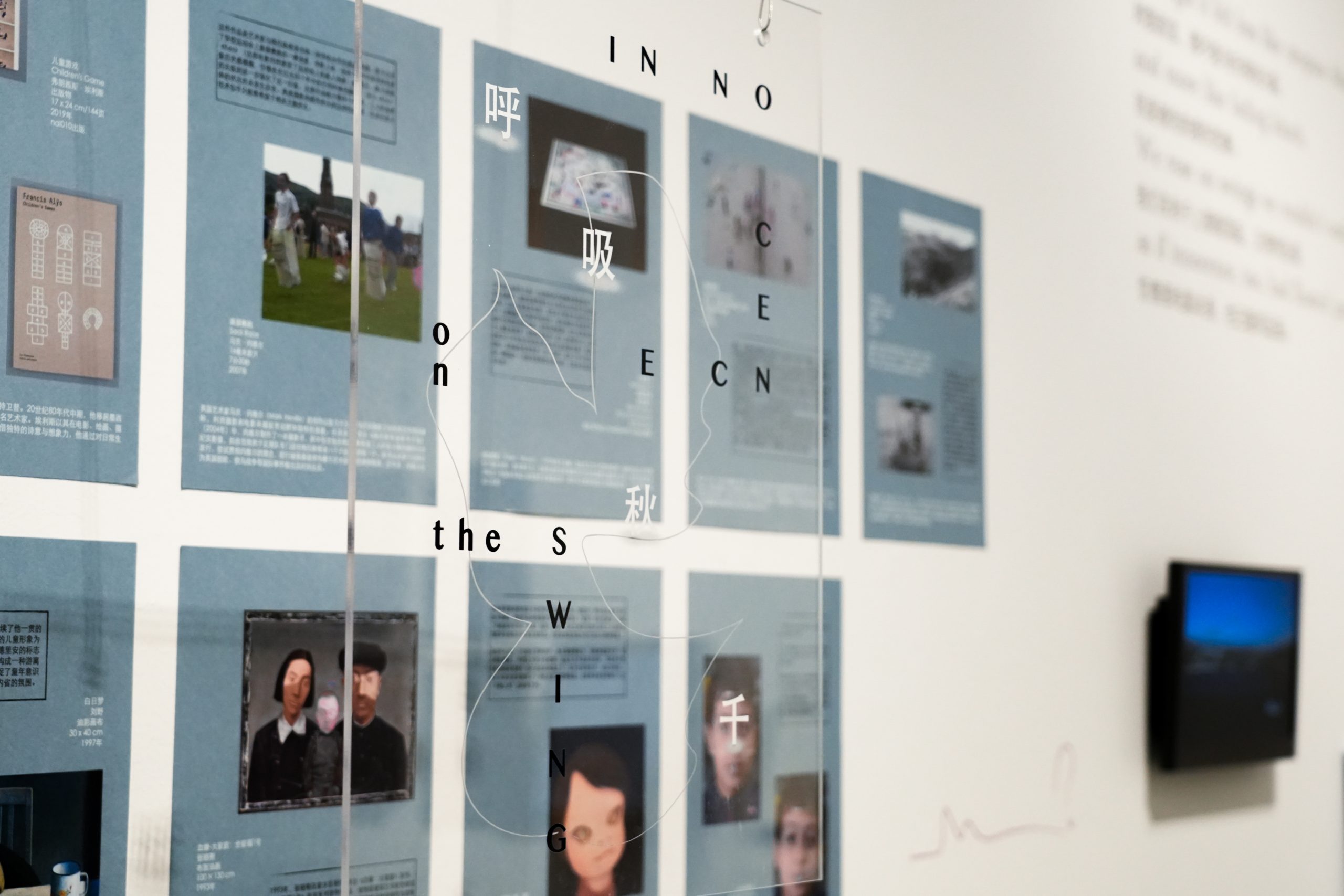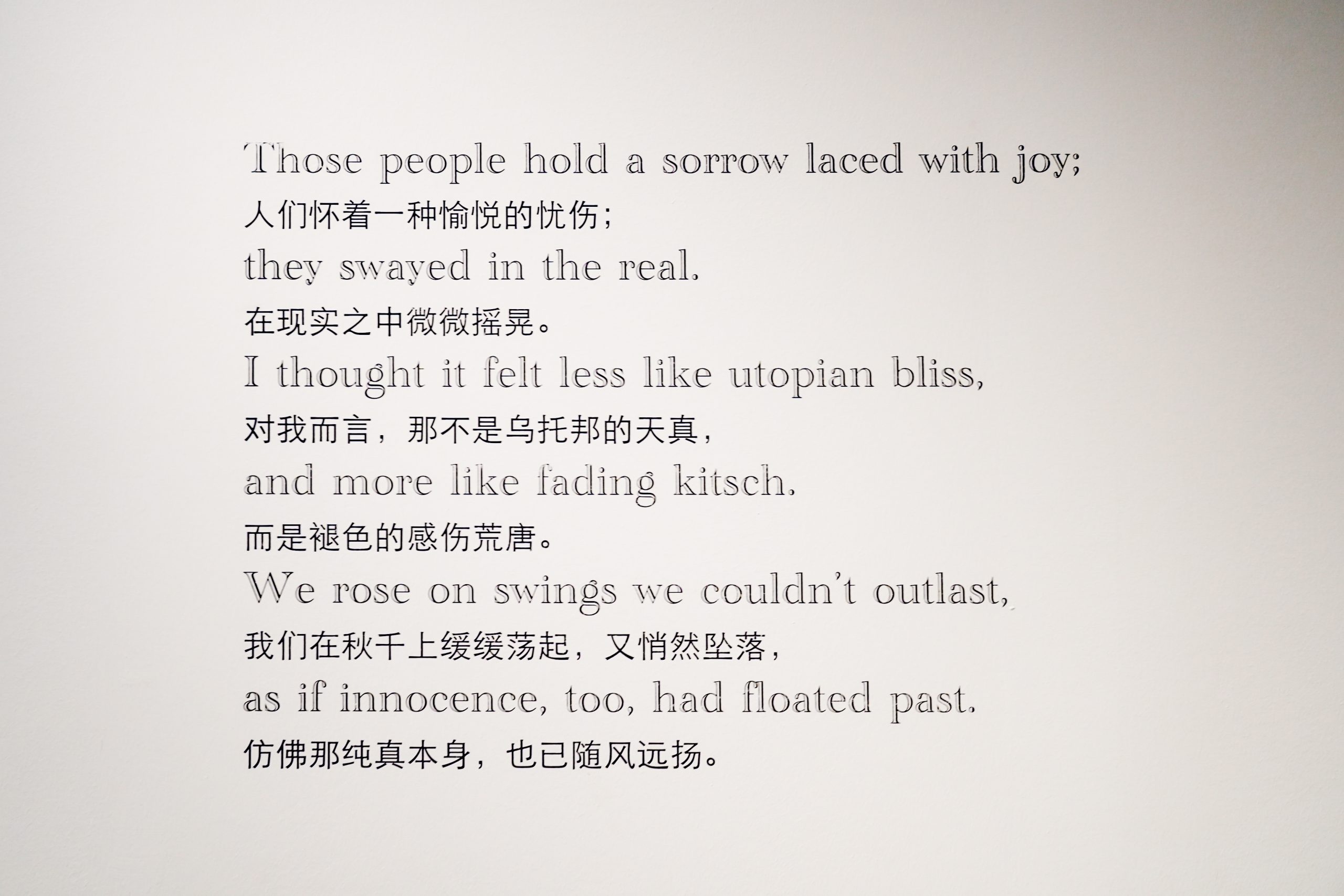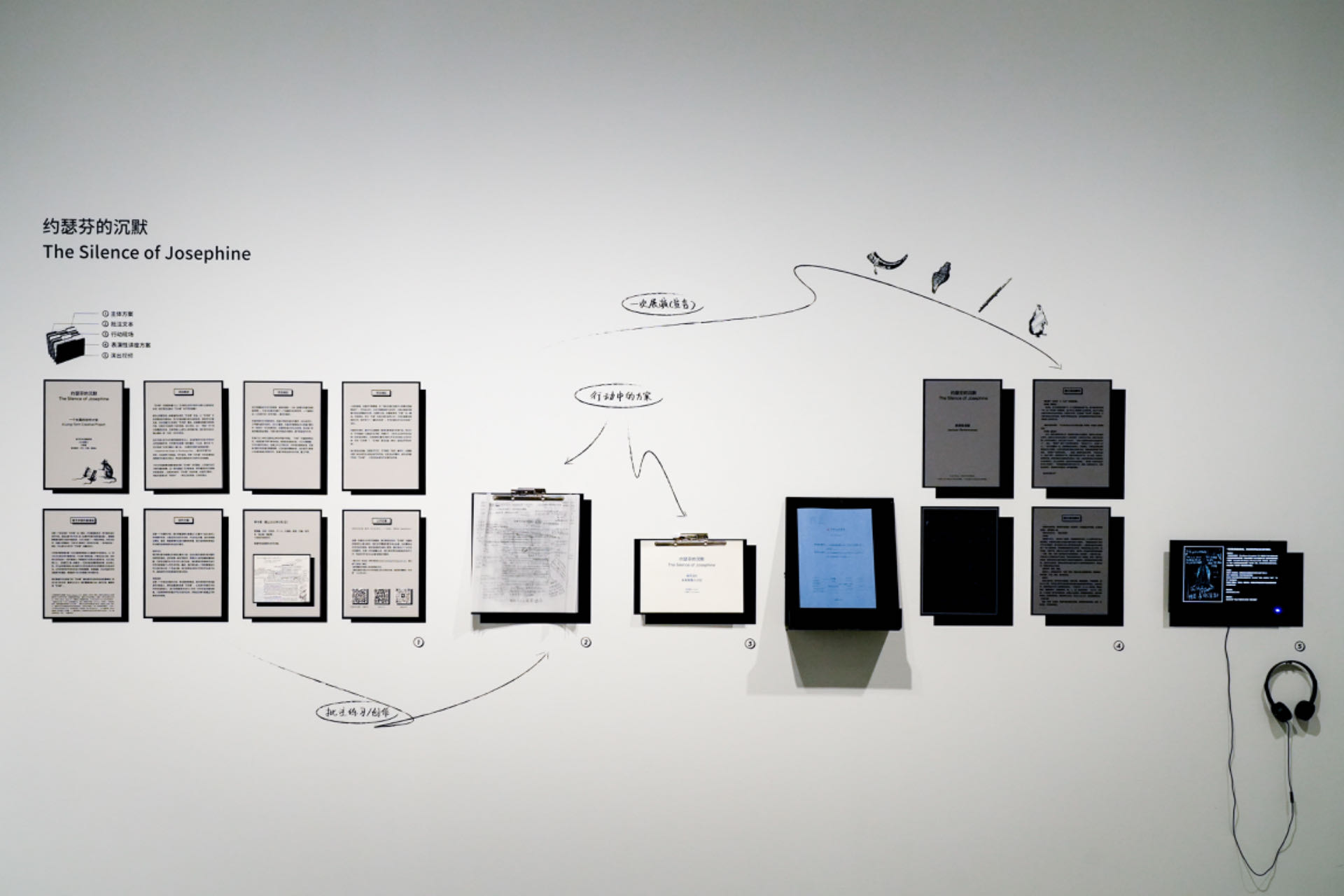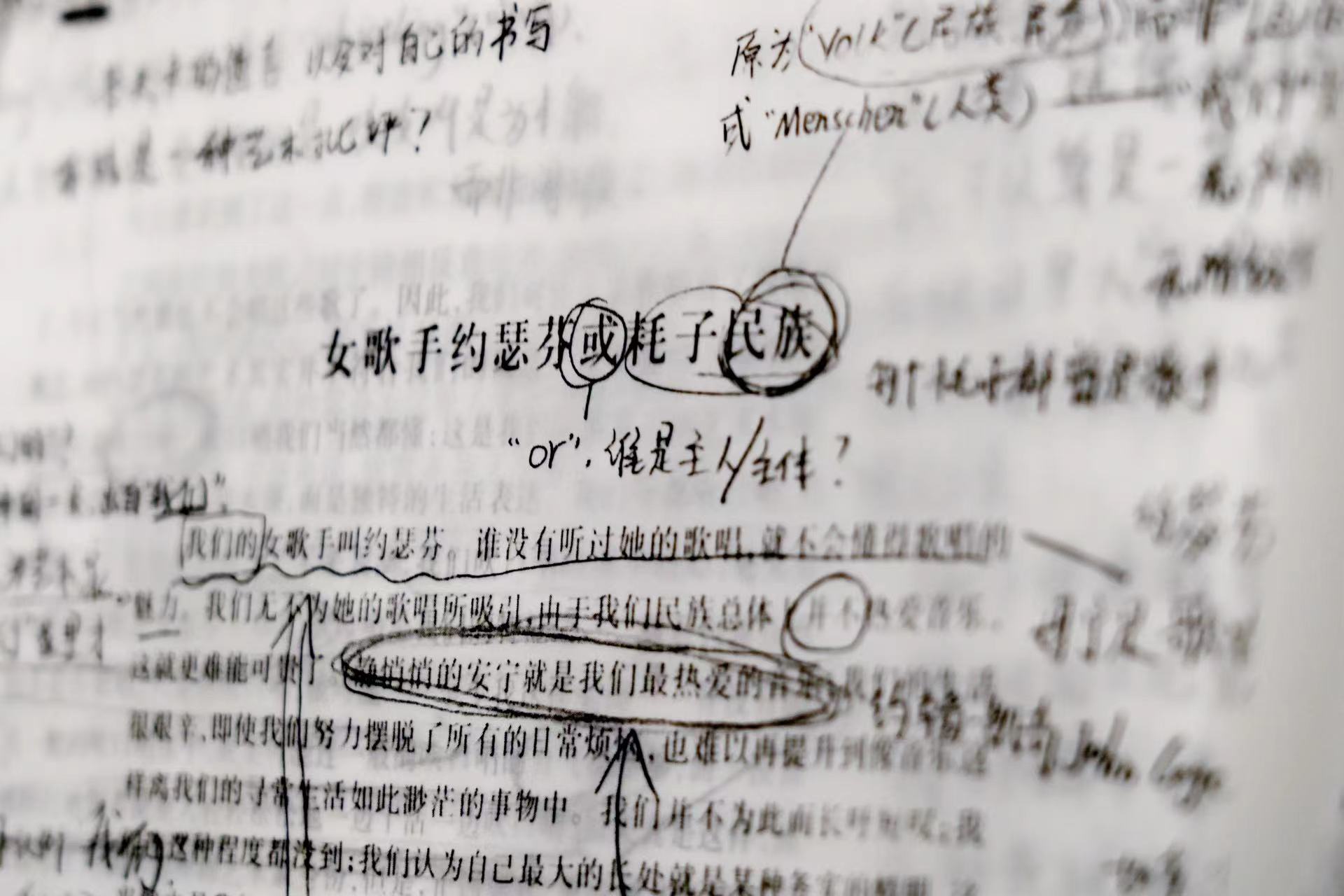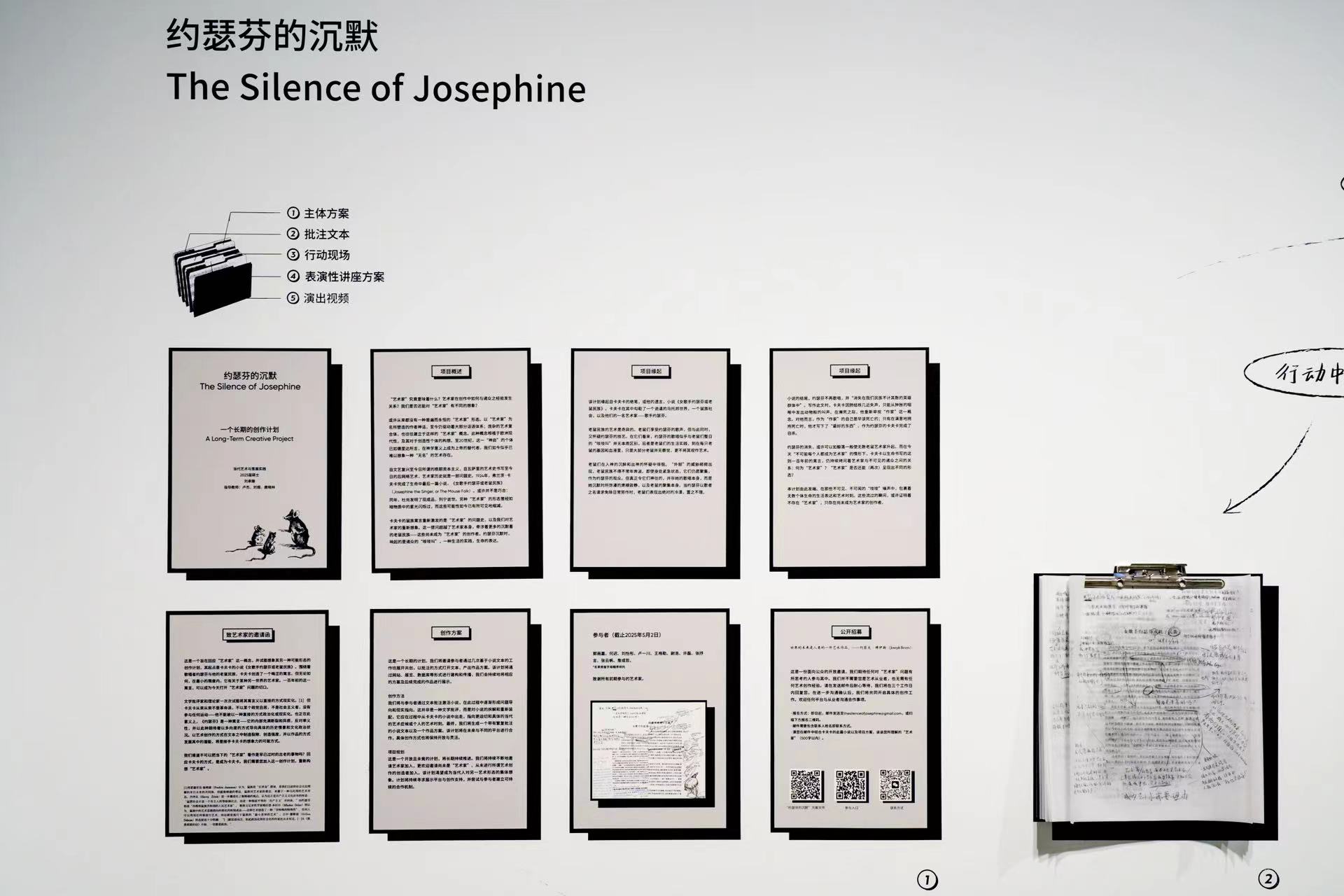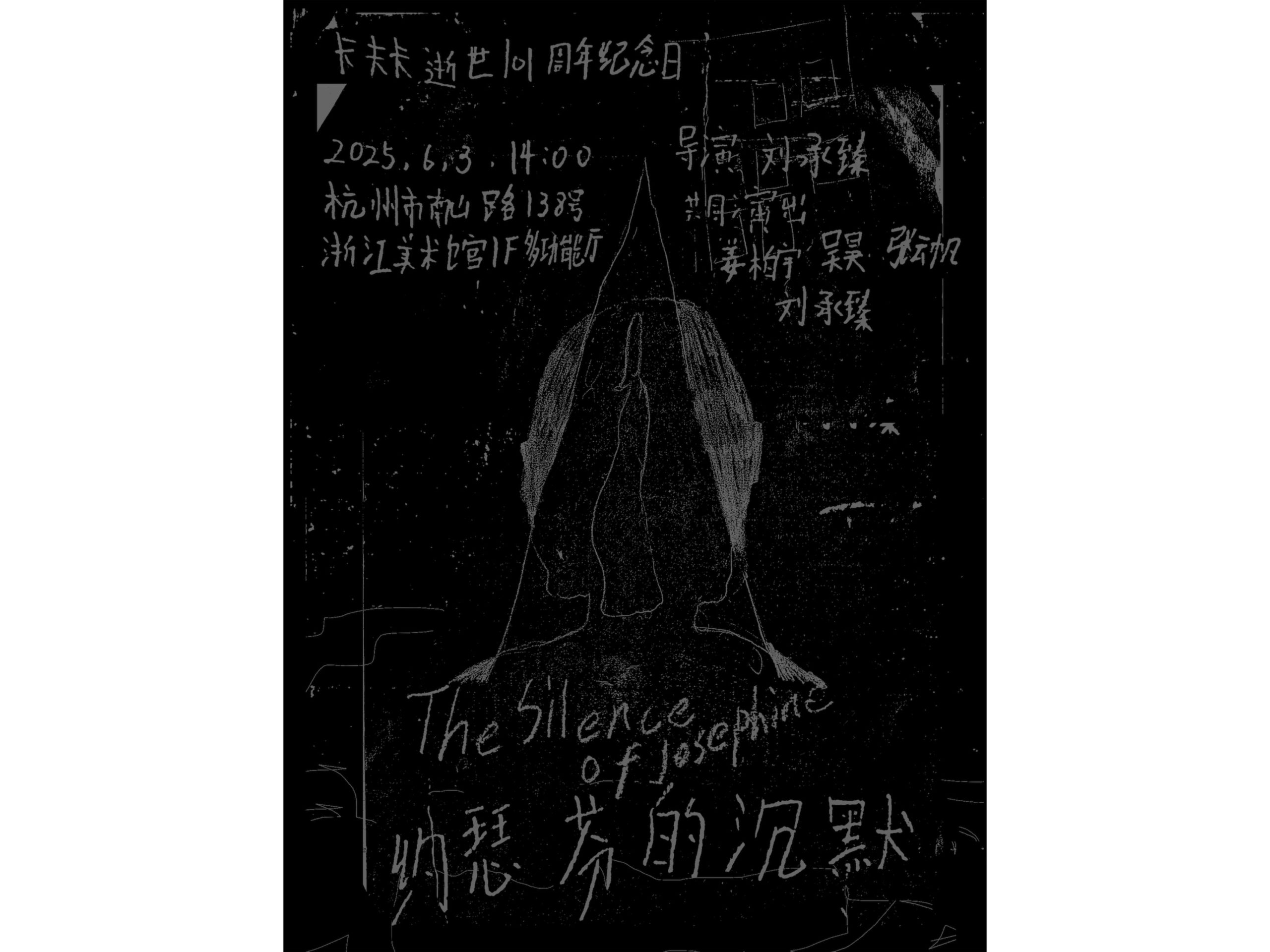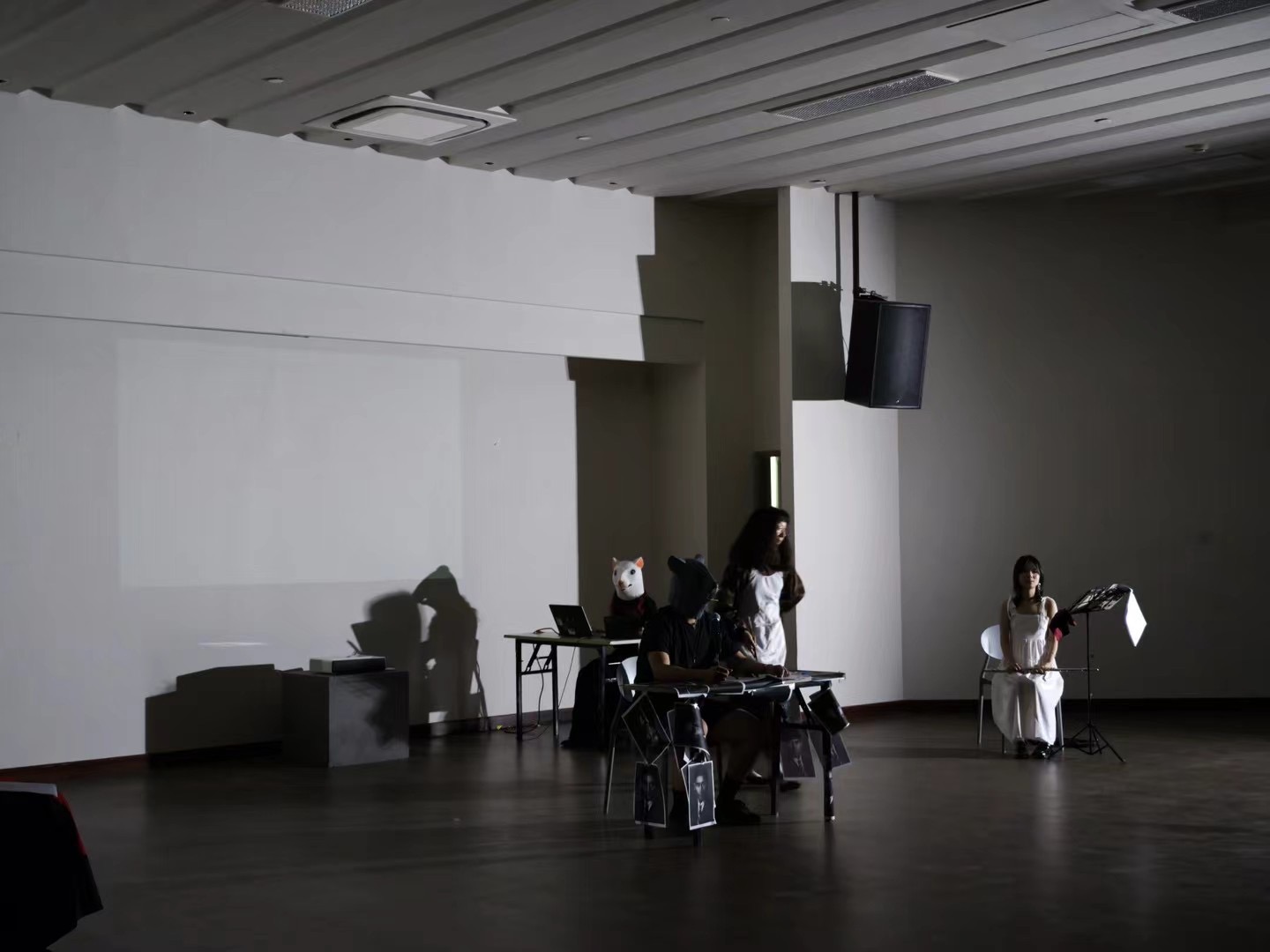2025.06.01-2025.06.20
Pacific Song of the 21st Century
ICAST 2025 Graduation Exhibition
Supervisor:
Gao Shiming, Lu Jie
Curator:
Liu Tian, Tang Xiaolin
Exhibition Coordinator:
Chen Zhanhao, Liu Beining
Ph.D.:
Liu Beining
Master:
Gou Cenwei, He Qinyu, Lin Zihui, Liu Chengzhen, Mei Cuo, Bao Shuangwen, Shou Yanjie
Venue:
Zhejiang Art Museum, 3rd Gallery
Duration:
2025.06.01-06.20
Host:
China Academy of Art, School of Intermedia Art
Institute of Contemporary Art and Social Thoughts (ICAST)
Co-host:
Zhejing Art Museum
"Pacific! Pacific!
Where mighty winds surge and des rage,
Where the earth’s lungs breathe peaks into being,
Where sea spray kisses the swaying sky...
Ah! Your face—embroidered lands;
Your back—a balefield of demons..."
— Liang Qichao, Pacific Song of the 20th Century (1900)
On the midnight of January 30, 1900, as Liang Qichao crossed the Pacific in a small boat "at the boundary between the old and new centuries, the pivot of Eastern and Western hemispheres," he uered his epochal queson: "What night is this? What place is this?"
A century later, in an age where virtual reality, algorithmic thought, polical correctness, and the proclaimed end of history seem to dominate our percepon of the world—where goods are detained at borders of the global village and users wander between walled app-kingdoms—the ancient geopolical tensions resurge. Rereading Liang Qichao's Pacific Song of the 20th Century, we are struck by its eerie immediacy: naons and empires, Panama and Siberia, "the weak become meat carved by the strong" and "when two gers fight, the lesser creatures suffer"... Why do these century-old verses sll haunt today’s headlines? Reality coldly declares they are no longer abstract concepts or poec flourishes. In distant echoes both piercing and muffled, history’s cadence tolls with ruthless clarity.
This has become the themac focus of the 2025 graduaon exhibion by eight master's and doctoral students at the ICAST (Instute of Contemporary Art and Social Thoughts).
This exhibion weaves together diverse global narraves: Okinawa/Ryukyu, the historic "Bridge Between Naons," encapsulates both the burdens and promises of world history within its compact archipelago; Istanbul, straddling connents, invites contemplaon on the complex noons of "innocence" as explored in Orhan Pamuk’s Museum of Innocence; Honolulu, another Pacific island outpost, safeguards lile-known arsc legacies from the early 20th century; Wuhan in 1938 demonstrates art's vital mobilizing power during existenal crises; the conceptual art movements of the 1960s connue to reveal new layers of meaning; millennial nostalgia manifests in elusive, flickering forms; while post-2008 representaons of the "body" and its transformaons compel us to examine the forces shaping our idenes. These mulfaceted exploraons converge like the haunng refrain from Kaa's "Josephine the Singer, or the Mouse Folk," reinterpreted and reimagined through various curatorial approaches including field researches, open calls, archival exhibions, film programs, paper-based displays, and lecture-performances...
This muldimensional curaon orchestrates a polyphonic song for the 21st century, resonang between historical fissures and contemporary dilemmas. It is a voyage into the depths of reality and history—a song and a summons. More crucially, it seeks to provoke collecve inquiry: How shall we, inhabitants of the 21st century, confront this vast "Pacific" that remains turbulent and ironically un- pacific? When "the moonless night falls silent, save for waves shaering starlight upon their fury"—what new ballads does it demand?
"The tumult in my breast swells like mountain peaks!
Drain this cup ll bier dregs become anthem!
Drunk and soliloquizing in the storm's eye,
I sing my savage, twenty-first-century Pacific!"
"Behold! Upon this Pacific stage of our century—
Tragedy's gong, comedy's chime, epic’s drum, horror's knell—
A divine cacophony!
To be born into this chorus—is it not grace?
To witness the world's vicissitudes—once, twice, through the turning of eras.”
Exhibition View
Graduation Works
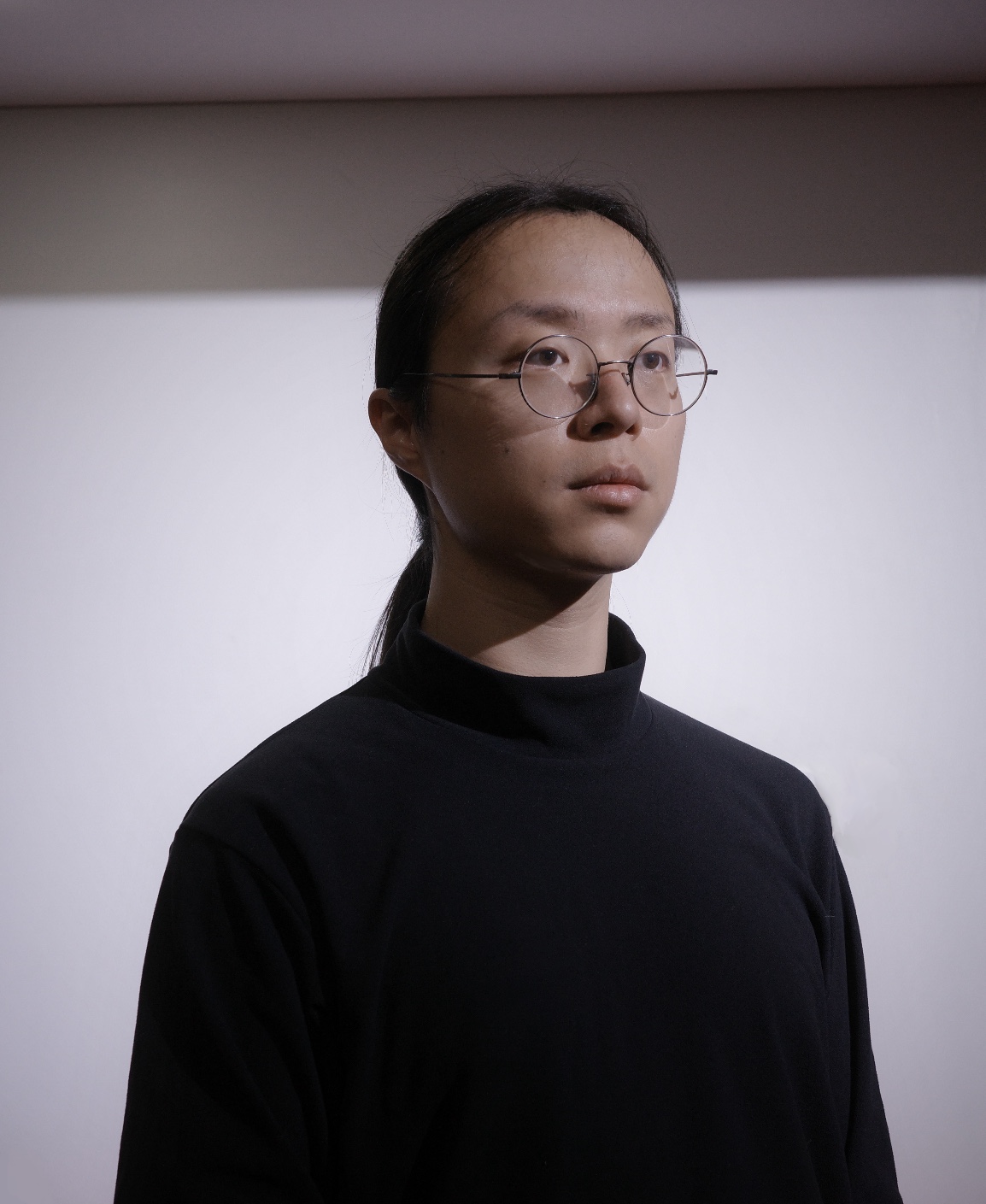
Liu Beining
Ph.D.
Research Direction: Visual Culture and Curatorial Study
Form: Curatorial Project
FEELINGS AND ACADEMICS: Ikurō Okumura’s Tour
Based on the theme of "feelings and academics (in comparation with 'sensation and scholarship'," this curatorial proposal uses the Japanese scholar Okumura Ikurō, who studied the history of Chinese art in the early 20th century, as a breakthrough point to explore the possible existence of an academic subject that bridges the contemporary and the classical, integrates knowledge and sensory experience, and draws on a global, interdisciplinary, and cross-media perspective while focusing on folk culture, livelihoods, landscapes, and local perceptions.
This research stems from Liu Beining's doctoral thesis A Study of Shan-Shui Concepts and Imagery in Early Medieval China, which investigates the invention of landscape painting around the 4th century AD. During his process of collecting literature, he discovered Okumura's 1939 self-published East Asian Art History research journal at an old bookstore, which led him to further reflections. The precious materials gathered by Okumura fill the gaps in art history and his "hands-on" research approach unveils the latent power behind both texts and images: using methods such as tracing and collage to process and revitalize images; gaining folk insights through walking to enhance historical perception; and expanding academic writing through media such as graphic design...... Okumura's academic methods, while seeming outdated in the early 20th century when modern scholarship was flourishing, now appear remarkably ahead of their time. These embodied cognitions and research paths that emerged at the dawn of "modernity" deeply challenge our current, disciplinarily divided, and standardized modes of academic production.
This curatorial proposal is divided into three sections. The first part connects Okumura and his research with the media perception and scholarly landscape of the early 20th century, while also discussing the emotional disposition of intellectuals at this special historical moment marking the beginning of modernization. The second part starts with the discovery of a complete set of Okumura's personal collection of books and other materials, which are stored in the Honolulu Museum of Art (HoMA). It outlines the actual circulation of various forms of information related to ancient Chinese art, such as publications, rubbings, and photographs, during the 1930s. Through the materials, it critically discusses the idea of "polymath." The third part focuses on the study of six dynasties landscape art, real landscape scenes, and the yellow earth topography, as seen in , presenting key aspects of Okumura's research and seeking inspiration for contemporary research, creation, and curatorial practices. The proposal emphasizes Okumura's characteristic as a "composite of intellectual desire," aiming to activate his underappreciated academic legacy. The exhibition design draws on the visual language of early modern media, highlighting nonlinear narratives and the intertwining of multiple media, intending to rediscover his focus on real geography, folk culture, and cross-sensory experiences. It not only reflects a unique case of intellectual formation during the modern era but also seeks to redefine the subjectivity of the "scholar" in today's fragmented information age, where academic disciplines are increasingly subdivided and globalized trends are reversing.
Doctoral Thesis: A Study of Shan-Shui Concepts and Imagery in Early Medieval China
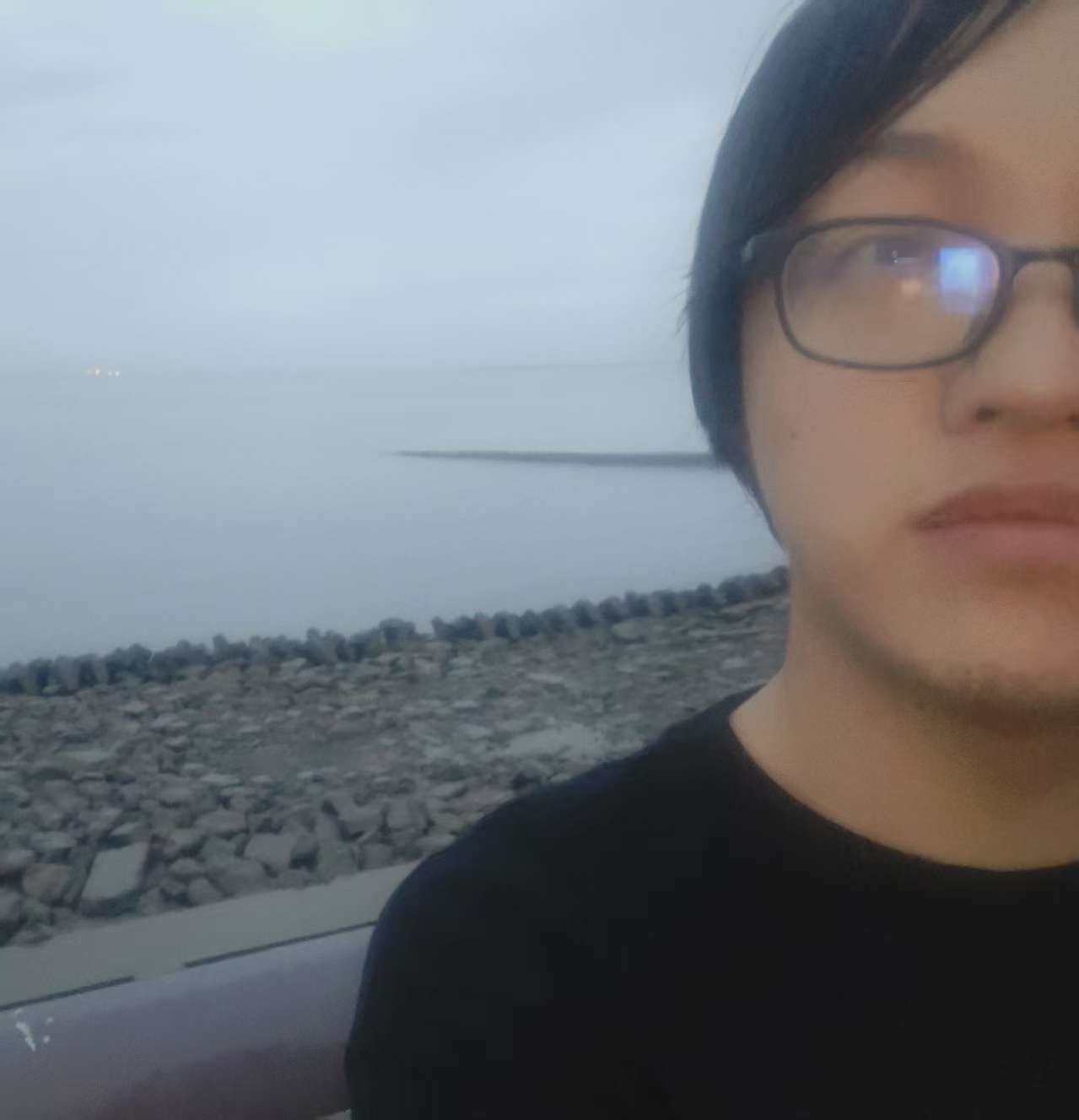
Shou Yanjie
Master
Research Direction: Contemporary Art and Curatorial Practice
Form: Curatorial Project
1938 Defending the Great Wuhan — When Art Becomes Mobilization
This exhibition focuses on a series of anti-Japanese war mobilization scenes centered on art during the 1938 Battle of Wuhan. Using the iconic "Art Day" and "Torch Singing Parade" from the Second Phase of the Anti-Japanese Expanded Propaganda Week as an entry point, it reveals the visual actions jointly created by artists and the public amidst the wartime crisis. These actions transformed Wuhan into a vibrant, art-infused street exhibition space, where the city itself became the stage. Artworks, under the pressing atmosphere of war, were endowed with new meanings, serving as pivotal mediums to inspire the masses and unite the political will of the community.
By revisiting a series of moments, works, and scenes, this exhibition seeks to reconstruct how artistic mobilization reached into grassroots communities and connected with the broader public. In various propaganda activities, artistic media such as cloth paintings, woodcuts, and slogans intertwined and overlapped, not only igniting immense public enthusiasm but also shaping moments of emotional rekindling amid battlefield crises. From static art exhibitions to the dynamic scenes of torch parades, from the festivalization of urban spaces to the everyday infiltration of art, Wuhan in 1938 became a model of visual war mobilization, showcasing how art and literature were transformed into powerful sources of hope and strength during a national crisis.
Through photographs, woodcuts, comics, and cloth paintings, this poignant history unfolds once again in vivid and striking detail. Wuhan in 1938—a city and its people—used art to ignite hope, rise above the fear of war, and create new collective moments. They infused the anti-Japanese war effort with indomitable spirit and boundless strength.
Master's Thesis: Festivalization,Display and Mobilization—The Case of Wuhan Propaganda Week in the War of Resistance Against Japanese Aggression
.jpg)
Mei Cuo
Master
Research Direction: Contemporary Art and Curatorial Practice
Form: Curatorial Project
Unfinished Words: Okinawa Word Project
Historical issues, existential issues, linguistic issues, identity issues...The 1945 Battle of Okinawa was the bloodiest battlefield in the Pacific War. It was this battle that led President Truman to make a definitive decision to use the atomic bomb to bring the war in the Pacific to an end. Since the Ryukyu Kingdom was annexed by the Meiji government in 1879, and later during Japan's negotiations to return to the international community—sacrificing Okinawa to the United States as a bargaining chip—Okinawa has borne the burden of what lies behind Japan's seemingly successful modernization: a history of failure. Until as late as 1972, Okinawans living in Tokyo needed to obtain something akin to a visa from the U.S. administration in Okinawa in order to return to their homeland. As scholar Sun Ge once remarked, Okinawans have ten thousand reasons for sorrow, and yet this land of suffering has birthed far more than tragedy.
Traces of war remain everywhere in Okinawa today. In memory of all the lives lost during the Battle of Okinawa and to pass on the tragic lessons of war to future generations, the Okinawa Prefectural Government erected theCornerstone of Peace monument in Mabuni Hill, Itoman City. The inscription engraved on the massive stone reads with stark clarity: "We, the people of Okinawa Prefecture, express our heartfelt condolences to all who lost their precious lives in the Battle of Okinawa. We hope to pass on the bitter lessons of war correctly to future generations and widely share with the world the "spirit of peace" nurtured by Okinawa's history and natural culture, in prayer for everlasting world peace." What does "peace" mean when claimed by Okinawa? The two simple syllables of "peace" that we so easily say or comprehend are, for Okinawa, a solemn vow, a reflection on centuries of history, a complex emotional bond with the land, and an ongoing struggle that must be defended—often at the cost of life.
In Okinawa in 2021, a 12-year-old student recited a poem titled . The term Maitreya Age stands in contrast to the age of war, signifying an era of peace to come. She said: "To you who stand with us, I hope you can feel the will of our ancestors flowing in our surging blood. I want to sing with you who stand with us. To sing a soul song that reaches a peaceful future." Within those mere four pages are countless unspoken words, and an unfinished wish waiting for us to act. I believe the flesh and blood of the song must be recovered; their thoughts and aspirations deserve our response—not just a cold and distant gaze or detached commentary.
Thus, , emerging from long-standing historical concerns, chooses "word" as a visual lens to enter the site, attempting to present the projection of world history from this tiny speck of land. It gestures toward the long and distant Pacific history under the name of Ryukyu, the brutal battle that marked the end of World War II, the prolonged struggles of Okinawan people outside U.S. military bases, and the contradictory reality of Okinawa as a tourist destination.
Caught between the geopolitical struggles of great powers and national narratives, the people of Okinawa have, through various forms of exploration, continually "shaped" a native Okinawan identity while also producing ideas that go "beyond Okinawa." Unfinished Words: Okinawa Word Projectis a fieldwork and exhibition initiative that seeks to reignite the imagination of grand narratives. Through dialogue between text, history, and the present, it aims to identify "the empire in the details" (Catherine Lutz), and to envision new possibilities for future peace and internationalism.
Master's Thesis: How Word Mobilizes Writing: Perspectives from the Exhibition "Power of the Word"
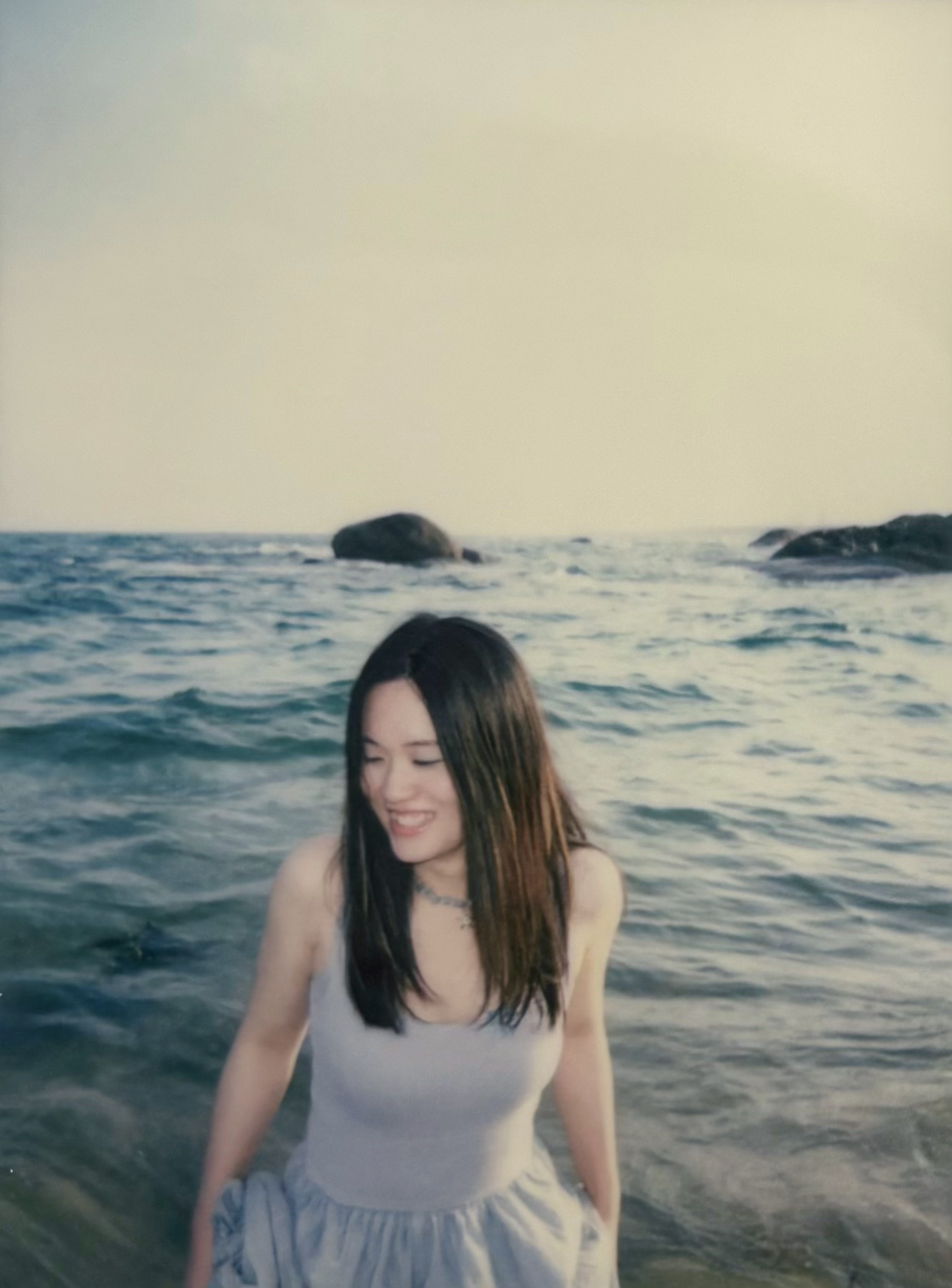
Gou Cenwei
Master
Research Direction: Visual Culture and Curatorial Study
Form: Curatorial Project
I See/You Mean — An Exhibition on Paper
The programme takes the novel by Lucy Lippard as a curatorial script and source of inspiration, and extracts from it the central logic of "Measure the immeasurable." In 1965, Joseph Kosuth used "One and Three Chairs" to present the central proposition of twentieth-century art history, which is how visible images and speakable language compete for the right to interpret the world. System and structure, language and "information," the presentation of visual or managerial experience in a scientistic manner, it is precisely these seemingly detached modes of creation that constitute what is commonly referred to as "Conceptual Art." They share with their structuralist contemporaries a revolutionary search for the realization of referential structures through systems and language.
I See/You Mean, through the textual translation of fictional photographs, the colour and statistical analysis of groups of characters, and the treatment of the mutual metaphor of wave movement and emotional flow, deepens the synthesis of this proposition in a literary form, in the sense that Lippard uses language as a contrasting agent, transforming absent images into psychological negatives, and emotions into waves, systems, and grids. In this sense, this exhibition attempts to reactivate the lost cognitive paradigm in Lippard's practice in the contemporary context, refusing to reduce "conception" to a cold theoretical game, rejecting the overly tilted tendency towards formalism, and even more so, rejecting the post-conceptual era's obsession with certain creations and artistic gibberish, and seeing how the rational system can properly become a poetic container of perception and experience through the cracks of the interplay between graphic and textual. the poetic container of experience. In this sense, the curator translates the title of the novel as "I see/You mean" and directly borrows it as the title of this exhibition.
It is through Lippard's eyes that this proposal attempts to observe how conceptual art, through its emotional dimension and visual expression, deeply enters into the phenomenon of subjective dislocation and intersection that structural theory cannot explain. Based on this, this proposal selects three representative artists to show how they respond to the "system" through creation in this logic. Inspired by the use of Max Lüscher's color theory in Lippard's novels, each artist is given a color based on personal synesthesia, which becomes a symbol to distinguish chapters and also serves as a direction to guide all associations and divergent thinking. Conceptual art continues to this day with its special "dematerialization/immateriality." For thinking and response in many senses, a paper exhibition that combines multiple perspectives (integrating historical materials, archives, quotations and comments) is considered as the final and best presentation form of this exhibition.
Master's Thesis: We are never detached from the material: A Discourse on "Dematerialization of art"
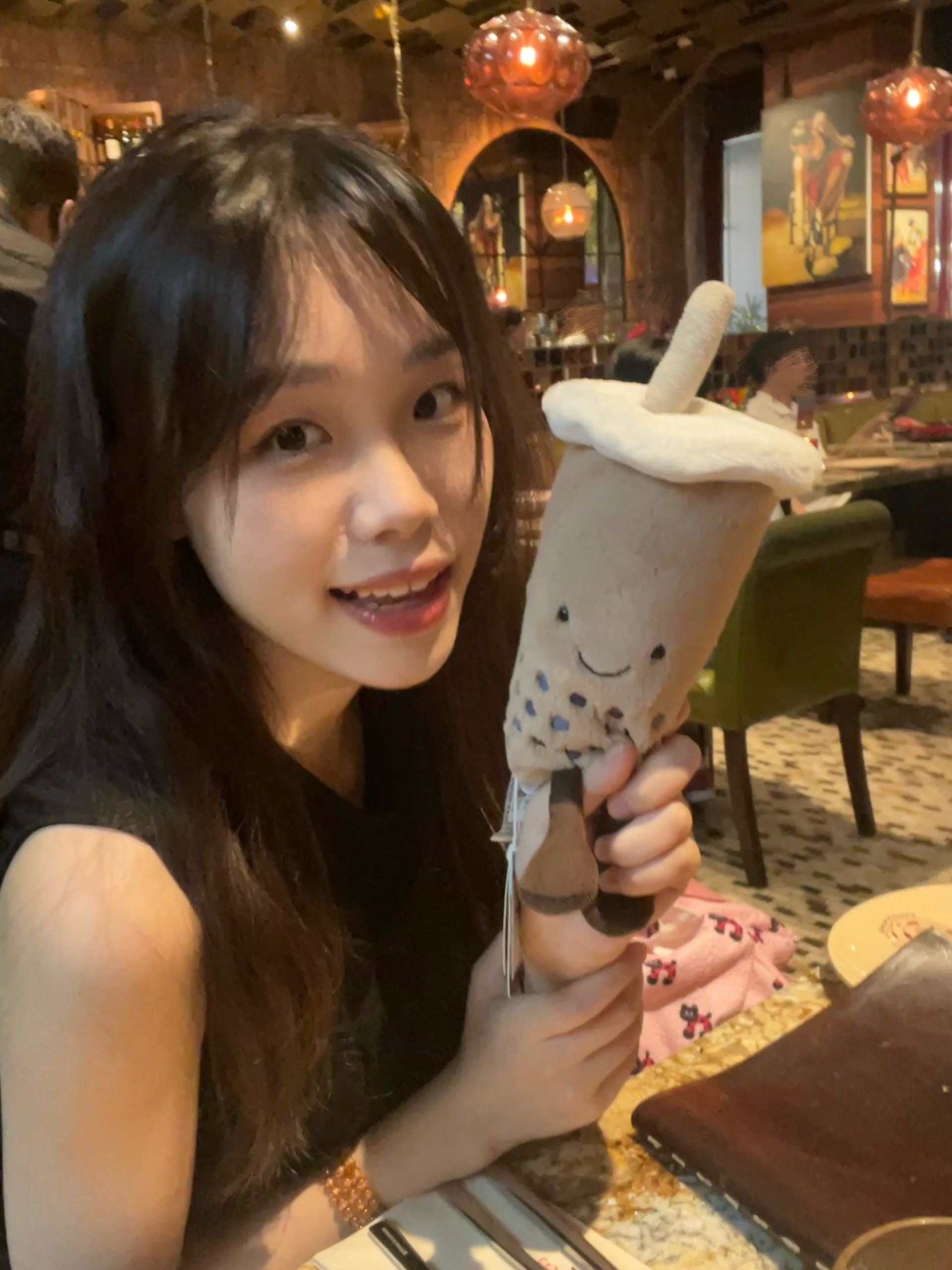
Lin Zihui
Master
Research Direction: Visual Culture and Curatorial Study
Form: Curatorial Project
The Fluid Body
In physics, a fluid is a state of matter that undergoes continuous deformation under the action of external forces, primarily including liquids and gases. Unlike solids, fluids do not have a fixed shape and instead adapt their form to the shape of their container. In modern society, however, our bodies seem to be sculpted into an idealized solid form—smooth, precise, and fully functional, like vessels infused with efficiency and regulation, perpetually prepared to enter the routines of public life. The exhibitionThe Fluid Body unfolds across three thematic sections—The Decent Person, Revisiting the Body, and The Age of Filters—responding to and presenting the body's continuous formation and struggle amid the entanglement of social discipline, sensory experience, and technological vision. Here, "fluidity" refers not only to internal physiological circulation such as blood flow, but more significantly to the migration and transformation of individual bodies and identities within social processes, as well as the subtle shifts the body itself undergoes in the course of these dynamics.
Society "solidifies" the body, turning us into "decent" individuals who play appropriate roles in suitable positions. A word once associated with etiquette and demeanor has quietly slipped into the fabric of technology and power, becoming a covert standard for assessing whether a person is suitable, timely, or useful. In the countless acts of self-alignment, we gradually forget to ask ourselves: Who am I? What kind of existence does my body belong to? Do I possess the power to perceive myself?
We know too well the script that exalts reason, health, optimism, and progress—a script that flattens the body into goals and schedules, diagrams and discipline. Yet the body has never truly acquiesced. In its quiet tremors—its misalignments, aches, refusals—it murmurs a resistance. These are the echoes of a body unwilling to be sealed into symbols, unwilling to dissolve into standard forms. If we allow ourselves to linger in these fissures—not as flaws, but as possible beginnings—we reach a threshold: where perfection gives way to wholeness, logic dissolves into sensation, and the body is no longer object, but becoming.
In an age flooded by images, where visibility reigns supreme, the body drifts again—this time through a liquid architecture of screens, codes, and curated selves. Social platforms, algorithmic gazes, and the grammar of the visual stitch us into a network without rest. Here, the"I"is uploaded, projected, disassembled—recast as a shimmer of scattered data. Technology not only extends our senses—it rearranges our intimacy with the body. We look without touching. We reveal without feeling. Pain and desire, once close to the skin, grow faint.
It is precisely through rupture and impurity that we are granted the possibility of reconnecting with the body in its fullness—not as an ideal form of what it ought to be, but as a living, ever-unfolding presence. When we no longer fear discomfort, no longer feel ashamed of what is impure, and no longer avert our gaze from the body's irrationalities, asymmetries, and silences, we begin, at last, to form a true relationship with it‒one that honors the complexity and incompleteness inherent in life itself. In this light, the body is no longer a subject to be measured, disciplined, or put on display. It becomes a fluid field of perception, where emotions, traumas, desires, memories, and technologies coexist—blending, clashing, resonating. Only by inhabiting this ongoing process of becoming can we begin to reinterpret the unknown within ourselves, to unearth long-buried feelings, to push against the limits of technology, and to discover the fractures that run through the world. The body has never truly conformed to any singular paradigm. Instead, by carrying within it all that has yet to be named, it moves continually toward an open, unfinished, and more whole sense of self.
Master's Thesis: The Quasi - Anthropological Museum: Reflection on Colonial Modernity in Exhibition Animism
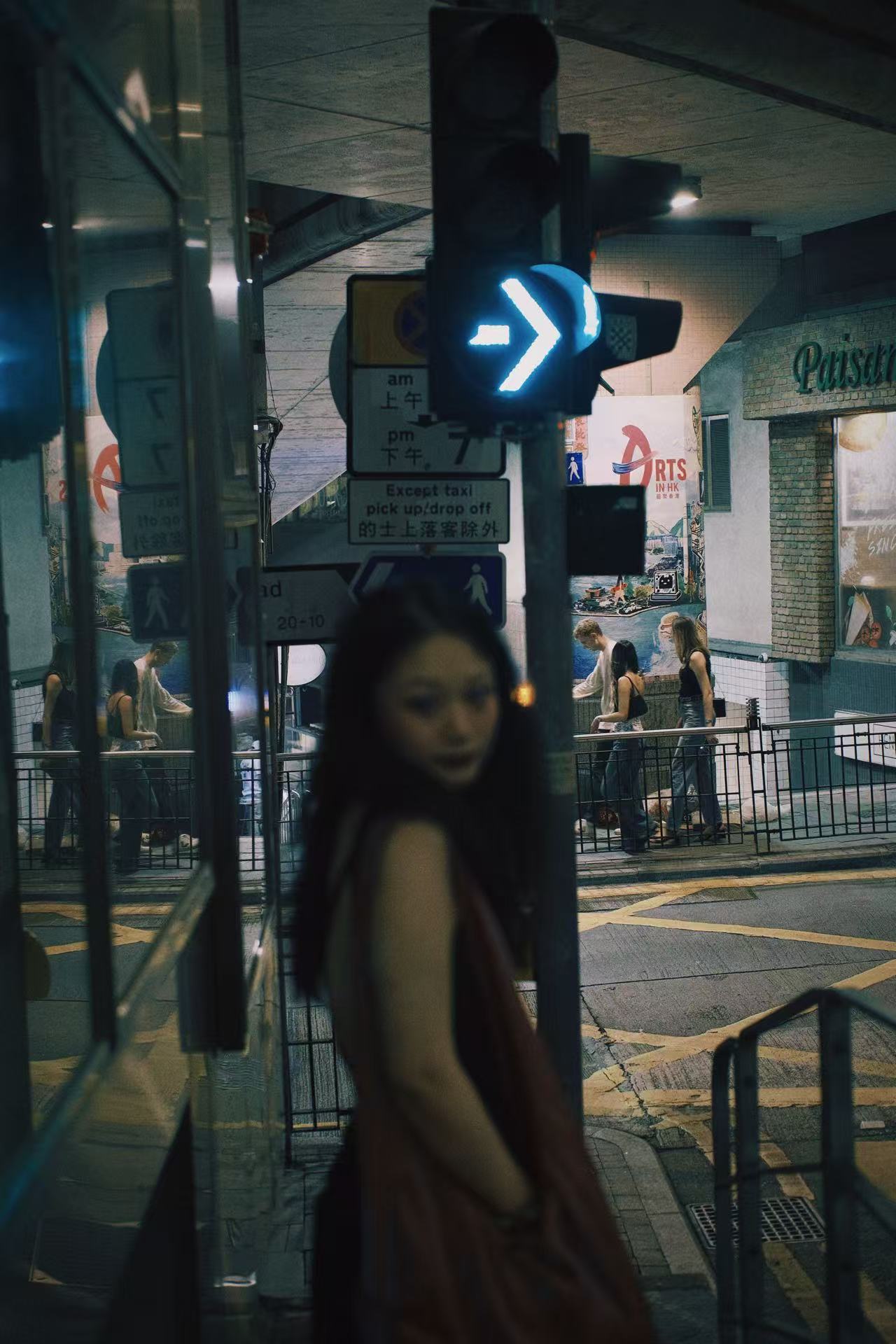
Bao Shuangwen
Master
Research Direction: Contemporary Art and Curatorial Practice
Form: Curatorial Project
time forever forks to countless future......
Taking the trend of in the context of the Chinese Internet as a starting point, this video curatorial action attempts to capture a more hidden contemporary symptom - the crisis of the slow erosion of the sense of the future. The prevalence of retro-obsession and the proliferation of narratives that dislocate time not only expose the structural decline of imagination, but also reflect the plight of contemporary culture that has lost its ability to grasp the present. Behind this spreading nostalgia, a series of profound social problems lurk: the pervasiveness of collective depression, the increasing rigidity of social mobility channels, and the disintegration of the community due to the high-speed flow of capital. Smartphones have transformed fragmented time into a new field of exploitation, and the widespread use of antidepressant drugs has given rise to a new type of subjective state called functional depression. A once inexhaustible newness has been replaced by an embarrassing sense of finitude and exhaustion. Global nostalgia is essentially a deep longing for a community of collective memory, for continuity in a world fragmented by algorithms and traffic. At a time when neoliberalism is rampant, computational logic is pervasive, labor patterns are temporary, and the texture of everyday experience is altered by the Internet and communication technologies, nostalgia inevitably resurfaces as a psychological defense mechanism, manifesting itself as nostalgia for the experience of a shrinking space and traumatic attachment to the local.
Rather than imprisoning nostalgia in a cage of private sentimentality, this exhibition presents the artist's use of nostalgia as a unique syntax for imagining the future, witnessing an uprising of memory. The questions that the exhibition tries to confront are: in the deepening crisis of neoliberalism, what kind of dislocated cultural landscape does nostalgia present? How can the path to the past be transformed into a potential energy for imagining the future? Is it possible to transform these symptoms of the times into a force for change in reality in a political rather than a psychological way?
The exhibition is a two-part experiment in the politics of memory. The first part of the exhibition, The 1990s and the New Millennium: Boiling Lives, presents a series of films about the 1990s and the new millennium, searching for a structure of feeling in the urban space of the time, and exploring the drastic changes in interpersonal relationships and mental landscape of the changing city. The next part, , turns to the deep geological structure of memory, exploring how contemporary art images develop a nostalgic practice full of dialectical tension by tracing the ghosts of historical events (hauntology). The juxtaposition and collision of archives, videos and installations from different temporal and spatial realities in the exhibition, nostalgia is no longer a self- indulgence, but a reconstruction of the real into the fictional through the archaeology of memory, lighting up fires in the ruins of memory, transforming the melancholy and pain of nostalgia into the political energy of reconstructing the public, and creating a controversial and imaginative starting point for future action.
Master's Thesis: Artistic Interventions and Urban Justice: A Study of the Dinghai Bridge Mutual Society
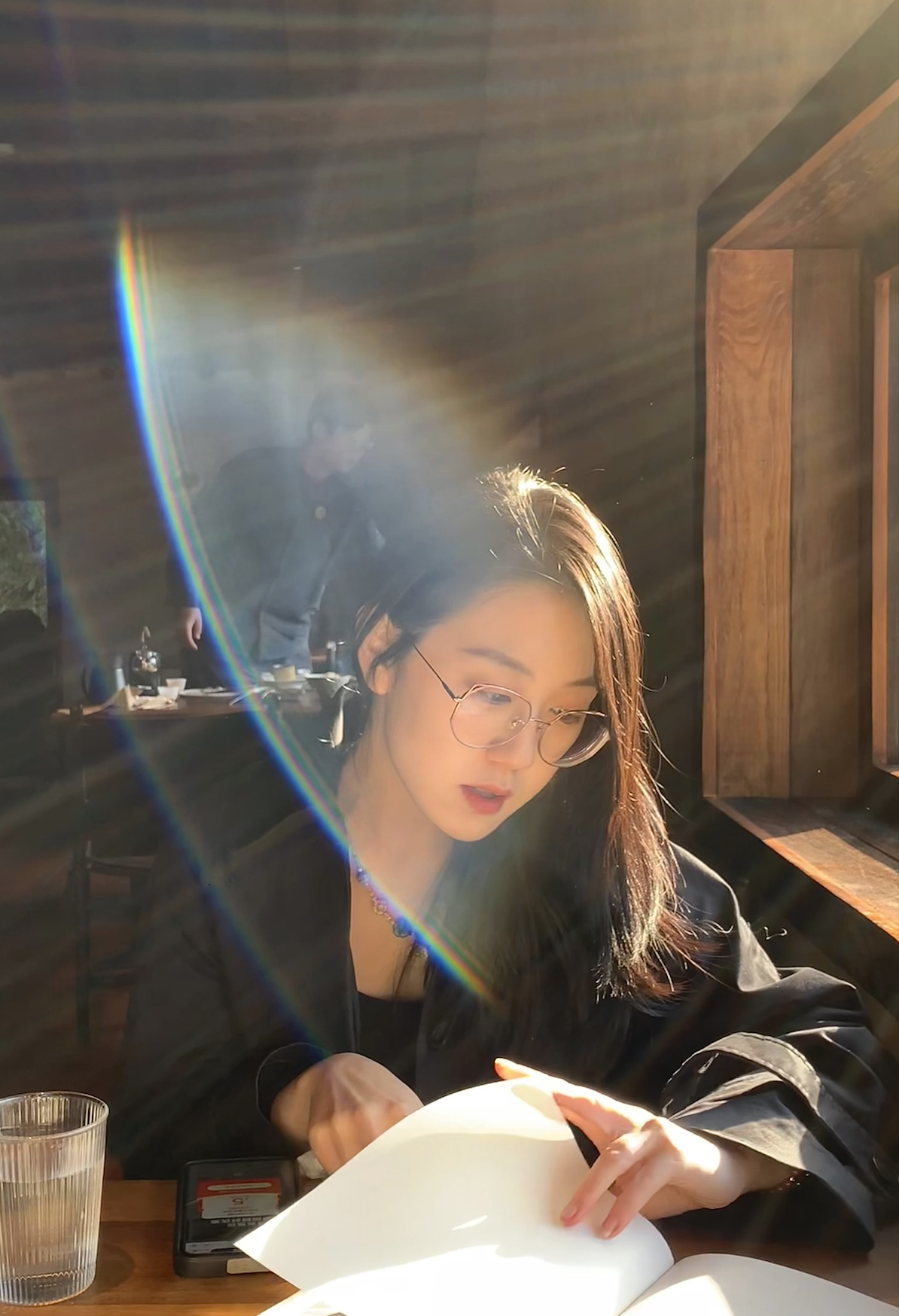
He Qinyu
Master
Research Direction: Visual Culture and Curatorial Study
Form: Curatorial Project
Innocence on the Swing
The Exhibition, Innocence on the Swing, borrows the imagery from the novel of the same name by Romanian-German writer Herta Müller (b.1953), and unfolds as a spatial narrative experiment around the theme of "innocence." The exhibition is anchored by a structural maze installation to run through the overall venue, creating three intertwined yet independent paths—"The Kiss of Tin," "The Phantom Pain of the Cuckoo Clock" and "Led Zeppelin," inviting the audience to re-enter the context of innocence from the perspective of physical perception, and perceive the subtle cracks in its texture in the wandering of multiple directions.
"Innocence," as a symbol of childishness and naturalness, once became one of the most constant adjectives in cultural narratives. However, it has gradually evolved into a manufactured landscape, an illusionary coat given by the deep structure of reality. This exhibition attempts to break the single narrative of innocence through the spatial language of "maze" and enter a complex perceptual game field.
Path 1 ‒ "The Kiss of Tin" constructs a situational framework around the portraits, using a cold yet intimate visual structure to expose the affective mechanisms and viewing dynamics of various "innocent" images.
Path 2 ‒ "The Phantom Pain of the Cuckoo Clock" probes childhood games like hopscotch, monopoly, or whistling - not as symbols of innocence, but as veils concealing deeper layers of tension, loss, and cruelty.
Path 3 ‒ "Led Zeppelin" traces the intuitive murmurings of a pre-linguistic state - gestures, babble, distraction - as unstable fragments of the artist's worldview.
In today's context, revisiting "innocence" is neither a longing for lost childhood nor a nostalgic return to some imagined authenticity. On the contrary, this exhibition seeks to extract innocence from the benign identity narratives of multiculturalism or post-colonialism, and reframe it as a strategy of action. Here, innocence is not an identity, but a method; not a primal state, but the re-emergence of a rupture—a renewed capacity to pose questions. Much like Orhan Pamuk's Museum of Innocence, when innocence is reintroduced as a structural thread in artistic language, it no longer evokes mere naivety or naturalness, but rather a cryptic, pre-linguistic state—a heightened sensitivity to the cracks and textures of history and reality. In this light, the exhibition echoes the original image of the Breathing Swing: light yet weighty, poetic yet critical, where memory and spirit are suspended in a state of perpetual tension.
Master's Thesis: From Fiction to Exhibition: A Study of the Curatorial Practice of The Museum of Innocence
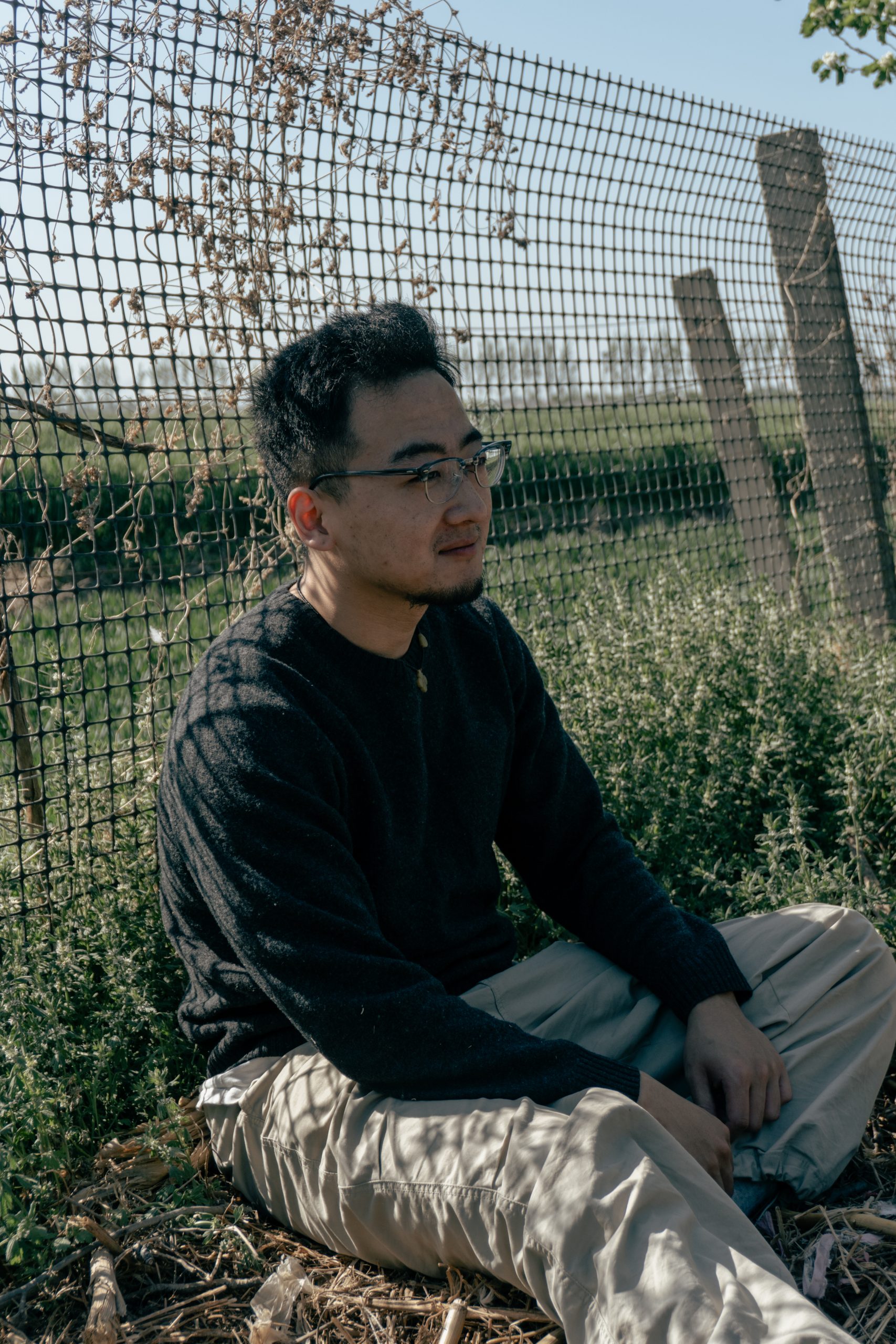
Liu Chengzhen
Master
Research Direction: Contemporary Art and Curatorial Practice
Form: Curatorial Project
The Silence of Josephine
What does it mean to be an"artist"? How does the artist engage with the experiences of the multitude in the process of creation? Can we still imagine the artist differently?
Perhaps there has never been a universal and eternal form of the"artist."The myth of the author constructed under the name of the"artist"continues to drive most discursive systems; the sprawling artistic apparatus is often built upon this very concept of the"artist."This notion is rooted in European modernity and its imagination of the creative individual. By the twentieth century, this divinely inspired individual—as Derrida suggests—had, in theological terms, become a substitute for God. Today, it seems nearly impossible for us to envision an art that is"nameless."
From the Renaissance to what is now called late capitalism, from Vasari's art-historical writing to today's post-internet art, the history of the artist is a history of problems. In 1924, Franz Kafka completed the last story of his life,Josephine the Singer, or The Mouse Folk. Perhaps it was no coincidence: that same year, Duchamp invented the readymade, and Lenin passed away. Another kind of"artist"once flickered like starlight in the dark matter—those possibilities have now visibly receded.
Kafka's mouse-folk parable reawakens the problematic history of the"artist,"as well as our capacity to reimagine the artist altogether. The question goes beyond the artist as such, implicating a broader field of silent creators among the mouse people—those who have not yet been recognized as"artists."When Josephine falls silent, what resounds is the squeaking of the multitude: a practice of living, an expression of life itself.
Master's Thesis: An Incomplete Project: On the Social Actions of the Art Workers’ Coalition
Visual Design: Chen Ziyuan, Xie Benhao
Videographer: Fan Xianxin, Zheng Ling
Promo Video Production: Zhang Shuyan
Acknowledgement: Li Kaisheng, Xu Yuan, Gao Shiqiang, Min Han, Zhang Jiale, Du Runfan, Lin Zhihui, Jiang Feiran, Jiang Huailiying, Wu Dan, Zhang Chenlu, Zhang Yijia
Pacific Song of the 21st Century
ICAST 2025 Graduation Exhibition
Supervisor:
Gao Shiming, Lu Jie
Curator:
Liu Tian, Tang Xiaolin
Exhibition Coordinator:
Chen Zhanhao, Liu Beining
Ph.D.:
Liu Beining
Master:
Gou Cenwei, He Qinyu, Lin Zihui, Liu Chengzhen, Mei Cuo, Bao Shuangwen, Shou Yanjie
Venue:
Zhejiang Art Museum, 3rd Gallery
Duration:
2025.06.01-06.20
Host:
China Academy of Art, School of Intermedia Art
Institute of Contemporary Art and Social Thoughts (ICAST)
Co-host:
Zhejing Art Museum
"Pacific! Pacific!
Where mighty winds surge and des rage,
Where the earth’s lungs breathe peaks into being,
Where sea spray kisses the swaying sky...
Ah! Your face—embroidered lands;
Your back—a balefield of demons..."
— Liang Qichao, Pacific Song of the 20th Century (1900)
On the midnight of January 30, 1900, as Liang Qichao crossed the Pacific in a small boat "at the boundary between the old and new centuries, the pivot of Eastern and Western hemispheres," he uered his epochal queson: "What night is this? What place is this?"
A century later, in an age where virtual reality, algorithmic thought, polical correctness, and the proclaimed end of history seem to dominate our percepon of the world—where goods are detained at borders of the global village and users wander between walled app-kingdoms—the ancient geopolical tensions resurge. Rereading Liang Qichao's Pacific Song of the 20th Century, we are struck by its eerie immediacy: naons and empires, Panama and Siberia, "the weak become meat carved by the strong" and "when two gers fight, the lesser creatures suffer"... Why do these century-old verses sll haunt today’s headlines? Reality coldly declares they are no longer abstract concepts or poec flourishes. In distant echoes both piercing and muffled, history’s cadence tolls with ruthless clarity.
This has become the themac focus of the 2025 graduaon exhibion by eight master's and doctoral students at the ICAST (Instute of Contemporary Art and Social Thoughts).
This exhibion weaves together diverse global narraves: Okinawa/Ryukyu, the historic "Bridge Between Naons," encapsulates both the burdens and promises of world history within its compact archipelago; Istanbul, straddling connents, invites contemplaon on the complex noons of "innocence" as explored in Orhan Pamuk’s Museum of Innocence; Honolulu, another Pacific island outpost, safeguards lile-known arsc legacies from the early 20th century; Wuhan in 1938 demonstrates art's vital mobilizing power during existenal crises; the conceptual art movements of the 1960s connue to reveal new layers of meaning; millennial nostalgia manifests in elusive, flickering forms; while post-2008 representaons of the "body" and its transformaons compel us to examine the forces shaping our idenes. These mulfaceted exploraons converge like the haunng refrain from Kaa's "Josephine the Singer, or the Mouse Folk," reinterpreted and reimagined through various curatorial approaches including field researches, open calls, archival exhibions, film programs, paper-based displays, and lecture-performances...
This muldimensional curaon orchestrates a polyphonic song for the 21st century, resonang between historical fissures and contemporary dilemmas. It is a voyage into the depths of reality and history—a song and a summons. More crucially, it seeks to provoke collecve inquiry: How shall we, inhabitants of the 21st century, confront this vast "Pacific" that remains turbulent and ironically un- pacific? When "the moonless night falls silent, save for waves shaering starlight upon their fury"—what new ballads does it demand?
"The tumult in my breast swells like mountain peaks!
Drain this cup ll bier dregs become anthem!
Drunk and soliloquizing in the storm's eye,
I sing my savage, twenty-first-century Pacific!"
"Behold! Upon this Pacific stage of our century—
Tragedy's gong, comedy's chime, epic’s drum, horror's knell—
A divine cacophony!
To be born into this chorus—is it not grace?
To witness the world's vicissitudes—once, twice, through the turning of eras.”
Exhibition View
Graduation Works

Liu Beining
Ph.D.
Research Direction: Visual Culture and Curatorial Study
Form: Curatorial Project
FEELINGS AND ACADEMICS: Ikurō Okumura’s Tour
Based on the theme of "feelings and academics (in comparation with 'sensation and scholarship'," this curatorial proposal uses the Japanese scholar Okumura Ikurō, who studied the history of Chinese art in the early 20th century, as a breakthrough point to explore the possible existence of an academic subject that bridges the contemporary and the classical, integrates knowledge and sensory experience, and draws on a global, interdisciplinary, and cross-media perspective while focusing on folk culture, livelihoods, landscapes, and local perceptions.
This research stems from Liu Beining's doctoral thesis A Study of Shan-Shui Concepts and Imagery in Early Medieval China, which investigates the invention of landscape painting around the 4th century AD. During his process of collecting literature, he discovered Okumura's 1939 self-published East Asian Art History research journal at an old bookstore, which led him to further reflections. The precious materials gathered by Okumura fill the gaps in art history and his "hands-on" research approach unveils the latent power behind both texts and images: using methods such as tracing and collage to process and revitalize images; gaining folk insights through walking to enhance historical perception; and expanding academic writing through media such as graphic design...... Okumura's academic methods, while seeming outdated in the early 20th century when modern scholarship was flourishing, now appear remarkably ahead of their time. These embodied cognitions and research paths that emerged at the dawn of "modernity" deeply challenge our current, disciplinarily divided, and standardized modes of academic production.
This curatorial proposal is divided into three sections. The first part connects Okumura and his research with the media perception and scholarly landscape of the early 20th century, while also discussing the emotional disposition of intellectuals at this special historical moment marking the beginning of modernization. The second part starts with the discovery of a complete set of Okumura's personal collection of books and other materials, which are stored in the Honolulu Museum of Art (HoMA). It outlines the actual circulation of various forms of information related to ancient Chinese art, such as publications, rubbings, and photographs, during the 1930s. Through the materials, it critically discusses the idea of "polymath." The third part focuses on the study of six dynasties landscape art, real landscape scenes, and the yellow earth topography, as seen in , presenting key aspects of Okumura's research and seeking inspiration for contemporary research, creation, and curatorial practices. The proposal emphasizes Okumura's characteristic as a "composite of intellectual desire," aiming to activate his underappreciated academic legacy. The exhibition design draws on the visual language of early modern media, highlighting nonlinear narratives and the intertwining of multiple media, intending to rediscover his focus on real geography, folk culture, and cross-sensory experiences. It not only reflects a unique case of intellectual formation during the modern era but also seeks to redefine the subjectivity of the "scholar" in today's fragmented information age, where academic disciplines are increasingly subdivided and globalized trends are reversing.
Doctoral Thesis: A Study of Shan-Shui Concepts and Imagery in Early Medieval China

Shou Yanjie
Master
Research Direction: Contemporary Art and Curatorial Practice
Form: Curatorial Project
1938 Defending the Great Wuhan — When Art Becomes Mobilization
This exhibition focuses on a series of anti-Japanese war mobilization scenes centered on art during the 1938 Battle of Wuhan. Using the iconic "Art Day" and "Torch Singing Parade" from the Second Phase of the Anti-Japanese Expanded Propaganda Week as an entry point, it reveals the visual actions jointly created by artists and the public amidst the wartime crisis. These actions transformed Wuhan into a vibrant, art-infused street exhibition space, where the city itself became the stage. Artworks, under the pressing atmosphere of war, were endowed with new meanings, serving as pivotal mediums to inspire the masses and unite the political will of the community.
By revisiting a series of moments, works, and scenes, this exhibition seeks to reconstruct how artistic mobilization reached into grassroots communities and connected with the broader public. In various propaganda activities, artistic media such as cloth paintings, woodcuts, and slogans intertwined and overlapped, not only igniting immense public enthusiasm but also shaping moments of emotional rekindling amid battlefield crises. From static art exhibitions to the dynamic scenes of torch parades, from the festivalization of urban spaces to the everyday infiltration of art, Wuhan in 1938 became a model of visual war mobilization, showcasing how art and literature were transformed into powerful sources of hope and strength during a national crisis.
Through photographs, woodcuts, comics, and cloth paintings, this poignant history unfolds once again in vivid and striking detail. Wuhan in 1938—a city and its people—used art to ignite hope, rise above the fear of war, and create new collective moments. They infused the anti-Japanese war effort with indomitable spirit and boundless strength.
Master's Thesis: Festivalization,Display and Mobilization—The Case of Wuhan Propaganda Week in the War of Resistance Against Japanese Aggression
.jpg)
Mei Cuo
Master
Research Direction: Contemporary Art and Curatorial Practice
Form: Curatorial Project
Unfinished Words: Okinawa Word Project
Historical issues, existential issues, linguistic issues, identity issues...The 1945 Battle of Okinawa was the bloodiest battlefield in the Pacific War. It was this battle that led President Truman to make a definitive decision to use the atomic bomb to bring the war in the Pacific to an end. Since the Ryukyu Kingdom was annexed by the Meiji government in 1879, and later during Japan's negotiations to return to the international community—sacrificing Okinawa to the United States as a bargaining chip—Okinawa has borne the burden of what lies behind Japan's seemingly successful modernization: a history of failure. Until as late as 1972, Okinawans living in Tokyo needed to obtain something akin to a visa from the U.S. administration in Okinawa in order to return to their homeland. As scholar Sun Ge once remarked, Okinawans have ten thousand reasons for sorrow, and yet this land of suffering has birthed far more than tragedy.
Traces of war remain everywhere in Okinawa today. In memory of all the lives lost during the Battle of Okinawa and to pass on the tragic lessons of war to future generations, the Okinawa Prefectural Government erected theCornerstone of Peace monument in Mabuni Hill, Itoman City. The inscription engraved on the massive stone reads with stark clarity: "We, the people of Okinawa Prefecture, express our heartfelt condolences to all who lost their precious lives in the Battle of Okinawa. We hope to pass on the bitter lessons of war correctly to future generations and widely share with the world the "spirit of peace" nurtured by Okinawa's history and natural culture, in prayer for everlasting world peace." What does "peace" mean when claimed by Okinawa? The two simple syllables of "peace" that we so easily say or comprehend are, for Okinawa, a solemn vow, a reflection on centuries of history, a complex emotional bond with the land, and an ongoing struggle that must be defended—often at the cost of life.
In Okinawa in 2021, a 12-year-old student recited a poem titled . The term Maitreya Age stands in contrast to the age of war, signifying an era of peace to come. She said: "To you who stand with us, I hope you can feel the will of our ancestors flowing in our surging blood. I want to sing with you who stand with us. To sing a soul song that reaches a peaceful future." Within those mere four pages are countless unspoken words, and an unfinished wish waiting for us to act. I believe the flesh and blood of the song must be recovered; their thoughts and aspirations deserve our response—not just a cold and distant gaze or detached commentary.
Thus, , emerging from long-standing historical concerns, chooses "word" as a visual lens to enter the site, attempting to present the projection of world history from this tiny speck of land. It gestures toward the long and distant Pacific history under the name of Ryukyu, the brutal battle that marked the end of World War II, the prolonged struggles of Okinawan people outside U.S. military bases, and the contradictory reality of Okinawa as a tourist destination.
Caught between the geopolitical struggles of great powers and national narratives, the people of Okinawa have, through various forms of exploration, continually "shaped" a native Okinawan identity while also producing ideas that go "beyond Okinawa." Unfinished Words: Okinawa Word Projectis a fieldwork and exhibition initiative that seeks to reignite the imagination of grand narratives. Through dialogue between text, history, and the present, it aims to identify "the empire in the details" (Catherine Lutz), and to envision new possibilities for future peace and internationalism.
Master's Thesis: How Word Mobilizes Writing: Perspectives from the Exhibition "Power of the Word"

Gou Cenwei
Master
Research Direction: Visual Culture and Curatorial Study
Form: Curatorial Project
I See/You Mean — An Exhibition on Paper
The programme takes the novel by Lucy Lippard as a curatorial script and source of inspiration, and extracts from it the central logic of "Measure the immeasurable." In 1965, Joseph Kosuth used "One and Three Chairs" to present the central proposition of twentieth-century art history, which is how visible images and speakable language compete for the right to interpret the world. System and structure, language and "information," the presentation of visual or managerial experience in a scientistic manner, it is precisely these seemingly detached modes of creation that constitute what is commonly referred to as "Conceptual Art." They share with their structuralist contemporaries a revolutionary search for the realization of referential structures through systems and language.
I See/You Mean, through the textual translation of fictional photographs, the colour and statistical analysis of groups of characters, and the treatment of the mutual metaphor of wave movement and emotional flow, deepens the synthesis of this proposition in a literary form, in the sense that Lippard uses language as a contrasting agent, transforming absent images into psychological negatives, and emotions into waves, systems, and grids. In this sense, this exhibition attempts to reactivate the lost cognitive paradigm in Lippard's practice in the contemporary context, refusing to reduce "conception" to a cold theoretical game, rejecting the overly tilted tendency towards formalism, and even more so, rejecting the post-conceptual era's obsession with certain creations and artistic gibberish, and seeing how the rational system can properly become a poetic container of perception and experience through the cracks of the interplay between graphic and textual. the poetic container of experience. In this sense, the curator translates the title of the novel as "I see/You mean" and directly borrows it as the title of this exhibition.
It is through Lippard's eyes that this proposal attempts to observe how conceptual art, through its emotional dimension and visual expression, deeply enters into the phenomenon of subjective dislocation and intersection that structural theory cannot explain. Based on this, this proposal selects three representative artists to show how they respond to the "system" through creation in this logic. Inspired by the use of Max Lüscher's color theory in Lippard's novels, each artist is given a color based on personal synesthesia, which becomes a symbol to distinguish chapters and also serves as a direction to guide all associations and divergent thinking. Conceptual art continues to this day with its special "dematerialization/immateriality." For thinking and response in many senses, a paper exhibition that combines multiple perspectives (integrating historical materials, archives, quotations and comments) is considered as the final and best presentation form of this exhibition.
Master's Thesis: We are never detached from the material: A Discourse on "Dematerialization of art"

Lin Zihui
Master
Research Direction: Visual Culture and Curatorial Study
Form: Curatorial Project
The Fluid Body
In physics, a fluid is a state of matter that undergoes continuous deformation under the action of external forces, primarily including liquids and gases. Unlike solids, fluids do not have a fixed shape and instead adapt their form to the shape of their container. In modern society, however, our bodies seem to be sculpted into an idealized solid form—smooth, precise, and fully functional, like vessels infused with efficiency and regulation, perpetually prepared to enter the routines of public life. The exhibitionThe Fluid Body unfolds across three thematic sections—The Decent Person, Revisiting the Body, and The Age of Filters—responding to and presenting the body's continuous formation and struggle amid the entanglement of social discipline, sensory experience, and technological vision. Here, "fluidity" refers not only to internal physiological circulation such as blood flow, but more significantly to the migration and transformation of individual bodies and identities within social processes, as well as the subtle shifts the body itself undergoes in the course of these dynamics.
Society "solidifies" the body, turning us into "decent" individuals who play appropriate roles in suitable positions. A word once associated with etiquette and demeanor has quietly slipped into the fabric of technology and power, becoming a covert standard for assessing whether a person is suitable, timely, or useful. In the countless acts of self-alignment, we gradually forget to ask ourselves: Who am I? What kind of existence does my body belong to? Do I possess the power to perceive myself?
We know too well the script that exalts reason, health, optimism, and progress—a script that flattens the body into goals and schedules, diagrams and discipline. Yet the body has never truly acquiesced. In its quiet tremors—its misalignments, aches, refusals—it murmurs a resistance. These are the echoes of a body unwilling to be sealed into symbols, unwilling to dissolve into standard forms. If we allow ourselves to linger in these fissures—not as flaws, but as possible beginnings—we reach a threshold: where perfection gives way to wholeness, logic dissolves into sensation, and the body is no longer object, but becoming.
In an age flooded by images, where visibility reigns supreme, the body drifts again—this time through a liquid architecture of screens, codes, and curated selves. Social platforms, algorithmic gazes, and the grammar of the visual stitch us into a network without rest. Here, the"I"is uploaded, projected, disassembled—recast as a shimmer of scattered data. Technology not only extends our senses—it rearranges our intimacy with the body. We look without touching. We reveal without feeling. Pain and desire, once close to the skin, grow faint.
It is precisely through rupture and impurity that we are granted the possibility of reconnecting with the body in its fullness—not as an ideal form of what it ought to be, but as a living, ever-unfolding presence. When we no longer fear discomfort, no longer feel ashamed of what is impure, and no longer avert our gaze from the body's irrationalities, asymmetries, and silences, we begin, at last, to form a true relationship with it‒one that honors the complexity and incompleteness inherent in life itself. In this light, the body is no longer a subject to be measured, disciplined, or put on display. It becomes a fluid field of perception, where emotions, traumas, desires, memories, and technologies coexist—blending, clashing, resonating. Only by inhabiting this ongoing process of becoming can we begin to reinterpret the unknown within ourselves, to unearth long-buried feelings, to push against the limits of technology, and to discover the fractures that run through the world. The body has never truly conformed to any singular paradigm. Instead, by carrying within it all that has yet to be named, it moves continually toward an open, unfinished, and more whole sense of self.
Master's Thesis: The Quasi - Anthropological Museum: Reflection on Colonial Modernity in Exhibition Animism

Bao Shuangwen
Master
Research Direction: Contemporary Art and Curatorial Practice
Form: Curatorial Project
time forever forks to countless future......
Taking the trend of in the context of the Chinese Internet as a starting point, this video curatorial action attempts to capture a more hidden contemporary symptom - the crisis of the slow erosion of the sense of the future. The prevalence of retro-obsession and the proliferation of narratives that dislocate time not only expose the structural decline of imagination, but also reflect the plight of contemporary culture that has lost its ability to grasp the present. Behind this spreading nostalgia, a series of profound social problems lurk: the pervasiveness of collective depression, the increasing rigidity of social mobility channels, and the disintegration of the community due to the high-speed flow of capital. Smartphones have transformed fragmented time into a new field of exploitation, and the widespread use of antidepressant drugs has given rise to a new type of subjective state called functional depression. A once inexhaustible newness has been replaced by an embarrassing sense of finitude and exhaustion. Global nostalgia is essentially a deep longing for a community of collective memory, for continuity in a world fragmented by algorithms and traffic. At a time when neoliberalism is rampant, computational logic is pervasive, labor patterns are temporary, and the texture of everyday experience is altered by the Internet and communication technologies, nostalgia inevitably resurfaces as a psychological defense mechanism, manifesting itself as nostalgia for the experience of a shrinking space and traumatic attachment to the local.
Rather than imprisoning nostalgia in a cage of private sentimentality, this exhibition presents the artist's use of nostalgia as a unique syntax for imagining the future, witnessing an uprising of memory. The questions that the exhibition tries to confront are: in the deepening crisis of neoliberalism, what kind of dislocated cultural landscape does nostalgia present? How can the path to the past be transformed into a potential energy for imagining the future? Is it possible to transform these symptoms of the times into a force for change in reality in a political rather than a psychological way?
The exhibition is a two-part experiment in the politics of memory. The first part of the exhibition, The 1990s and the New Millennium: Boiling Lives, presents a series of films about the 1990s and the new millennium, searching for a structure of feeling in the urban space of the time, and exploring the drastic changes in interpersonal relationships and mental landscape of the changing city. The next part, , turns to the deep geological structure of memory, exploring how contemporary art images develop a nostalgic practice full of dialectical tension by tracing the ghosts of historical events (hauntology). The juxtaposition and collision of archives, videos and installations from different temporal and spatial realities in the exhibition, nostalgia is no longer a self- indulgence, but a reconstruction of the real into the fictional through the archaeology of memory, lighting up fires in the ruins of memory, transforming the melancholy and pain of nostalgia into the political energy of reconstructing the public, and creating a controversial and imaginative starting point for future action.
Master's Thesis: Artistic Interventions and Urban Justice: A Study of the Dinghai Bridge Mutual Society

He Qinyu
Master
Research Direction: Visual Culture and Curatorial Study
Form: Curatorial Project
Innocence on the Swing
The Exhibition, Innocence on the Swing, borrows the imagery from the novel of the same name by Romanian-German writer Herta Müller (b.1953), and unfolds as a spatial narrative experiment around the theme of "innocence." The exhibition is anchored by a structural maze installation to run through the overall venue, creating three intertwined yet independent paths—"The Kiss of Tin," "The Phantom Pain of the Cuckoo Clock" and "Led Zeppelin," inviting the audience to re-enter the context of innocence from the perspective of physical perception, and perceive the subtle cracks in its texture in the wandering of multiple directions.
"Innocence," as a symbol of childishness and naturalness, once became one of the most constant adjectives in cultural narratives. However, it has gradually evolved into a manufactured landscape, an illusionary coat given by the deep structure of reality. This exhibition attempts to break the single narrative of innocence through the spatial language of "maze" and enter a complex perceptual game field.
Path 1 ‒ "The Kiss of Tin" constructs a situational framework around the portraits, using a cold yet intimate visual structure to expose the affective mechanisms and viewing dynamics of various "innocent" images.
Path 2 ‒ "The Phantom Pain of the Cuckoo Clock" probes childhood games like hopscotch, monopoly, or whistling - not as symbols of innocence, but as veils concealing deeper layers of tension, loss, and cruelty.
Path 3 ‒ "Led Zeppelin" traces the intuitive murmurings of a pre-linguistic state - gestures, babble, distraction - as unstable fragments of the artist's worldview.
In today's context, revisiting "innocence" is neither a longing for lost childhood nor a nostalgic return to some imagined authenticity. On the contrary, this exhibition seeks to extract innocence from the benign identity narratives of multiculturalism or post-colonialism, and reframe it as a strategy of action. Here, innocence is not an identity, but a method; not a primal state, but the re-emergence of a rupture—a renewed capacity to pose questions. Much like Orhan Pamuk's Museum of Innocence, when innocence is reintroduced as a structural thread in artistic language, it no longer evokes mere naivety or naturalness, but rather a cryptic, pre-linguistic state—a heightened sensitivity to the cracks and textures of history and reality. In this light, the exhibition echoes the original image of the Breathing Swing: light yet weighty, poetic yet critical, where memory and spirit are suspended in a state of perpetual tension.
Master's Thesis: From Fiction to Exhibition: A Study of the Curatorial Practice of The Museum of Innocence

Liu Chengzhen
Master
Research Direction: Contemporary Art and Curatorial Practice
Form: Curatorial Project
The Silence of Josephine
What does it mean to be an"artist"? How does the artist engage with the experiences of the multitude in the process of creation? Can we still imagine the artist differently?
Perhaps there has never been a universal and eternal form of the"artist."The myth of the author constructed under the name of the"artist"continues to drive most discursive systems; the sprawling artistic apparatus is often built upon this very concept of the"artist."This notion is rooted in European modernity and its imagination of the creative individual. By the twentieth century, this divinely inspired individual—as Derrida suggests—had, in theological terms, become a substitute for God. Today, it seems nearly impossible for us to envision an art that is"nameless."
From the Renaissance to what is now called late capitalism, from Vasari's art-historical writing to today's post-internet art, the history of the artist is a history of problems. In 1924, Franz Kafka completed the last story of his life,Josephine the Singer, or The Mouse Folk. Perhaps it was no coincidence: that same year, Duchamp invented the readymade, and Lenin passed away. Another kind of"artist"once flickered like starlight in the dark matter—those possibilities have now visibly receded.
Kafka's mouse-folk parable reawakens the problematic history of the"artist,"as well as our capacity to reimagine the artist altogether. The question goes beyond the artist as such, implicating a broader field of silent creators among the mouse people—those who have not yet been recognized as"artists."When Josephine falls silent, what resounds is the squeaking of the multitude: a practice of living, an expression of life itself.
Master's Thesis: An Incomplete Project: On the Social Actions of the Art Workers’ Coalition
Visual Design: Chen Ziyuan, Xie Benhao
Videographer: Fan Xianxin, Zheng Ling
Promo Video Production: Zhang Shuyan
Acknowledgement: Li Kaisheng, Xu Yuan, Gao Shiqiang, Min Han, Zhang Jiale, Du Runfan, Lin Zhihui, Jiang Feiran, Jiang Huailiying, Wu Dan, Zhang Chenlu, Zhang Yijia
